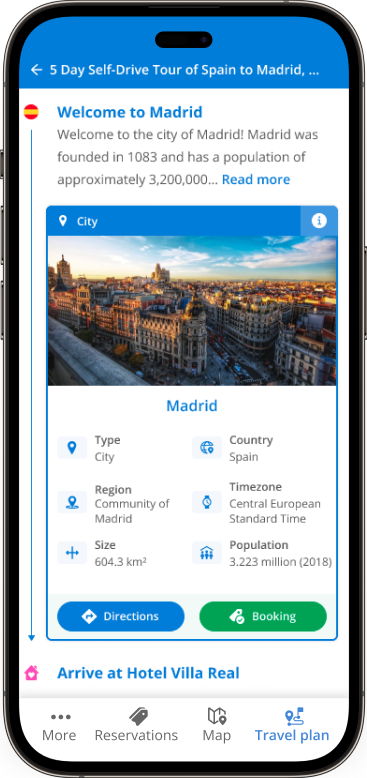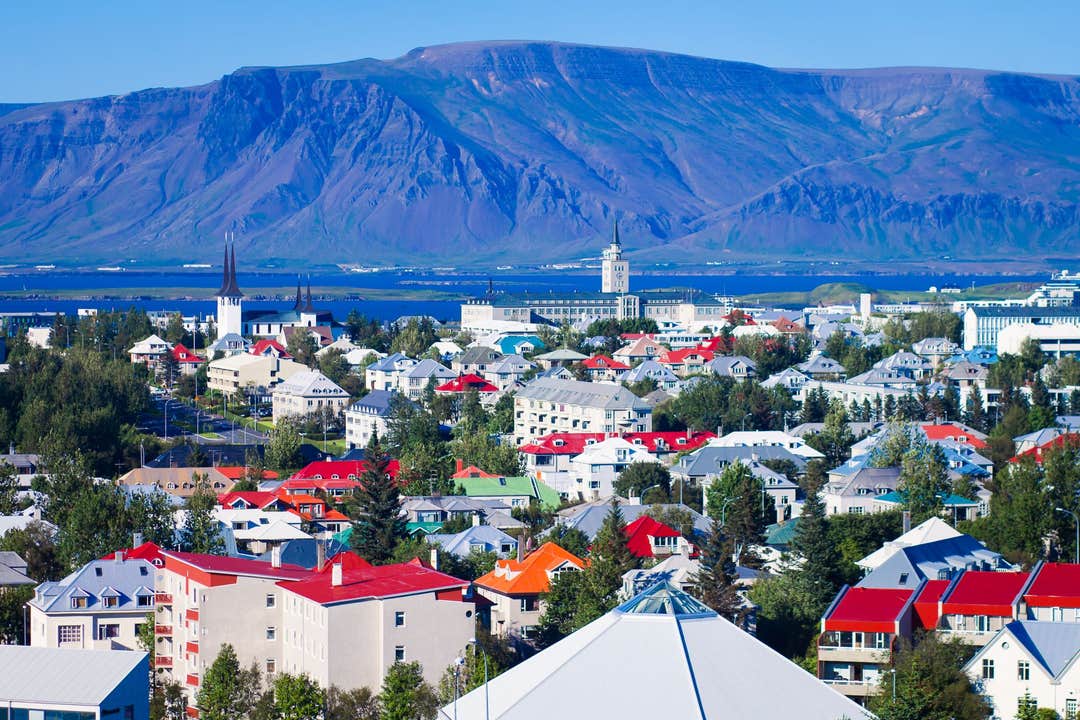
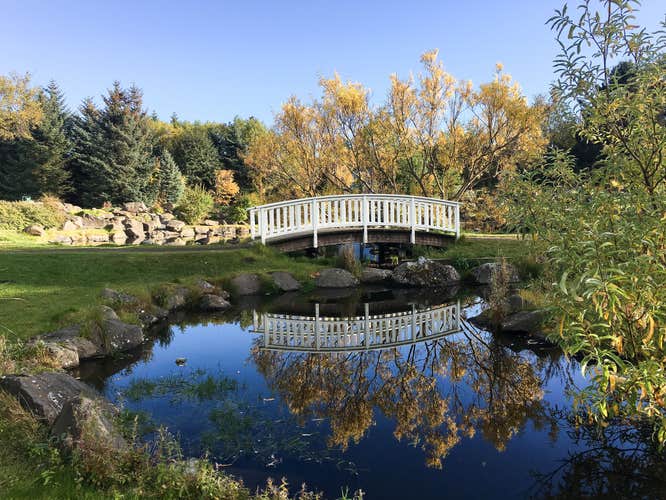
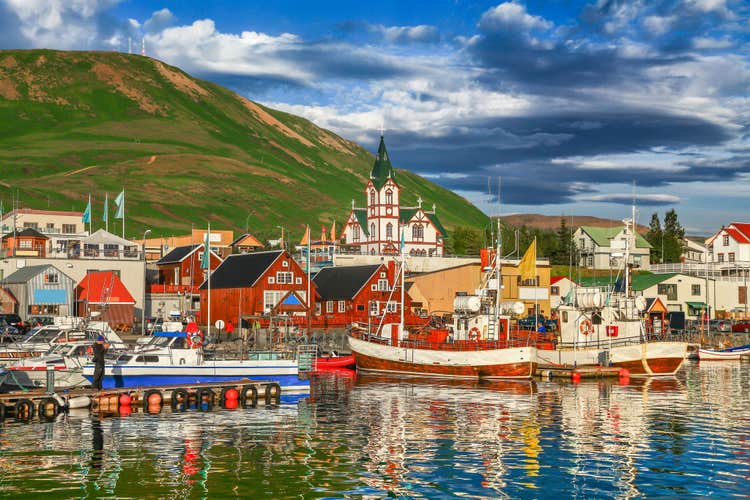

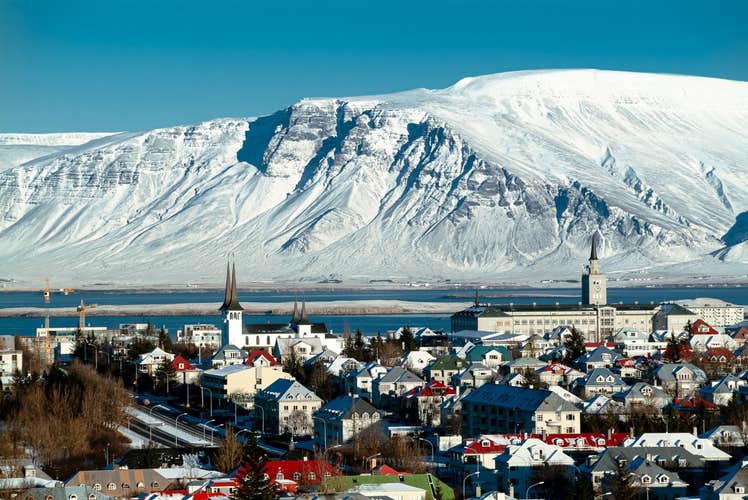
Knowing the best time to visit Reykjavik is the first step to unlocking an exciting Icelandic adventure. Learn about the cheapest times to visit, the best weather, and what to expect during each season. From chasing the northern lights to soaking in the midnight sun, Reykjavik offers unique charm and experiences throughout the year.
Uncover the secrets to aligning your travel schedule with the most exciting tours and activities in Reykjavik, allowing you to curate the best Reykjavik itineraries packed with your favorite experiences. Choose from a variety of vacation packages in Reykjavik, Iceland's spectacular capital, and read on to discover when to visit!
Best Seasons To Visit Reykjavik, Iceland
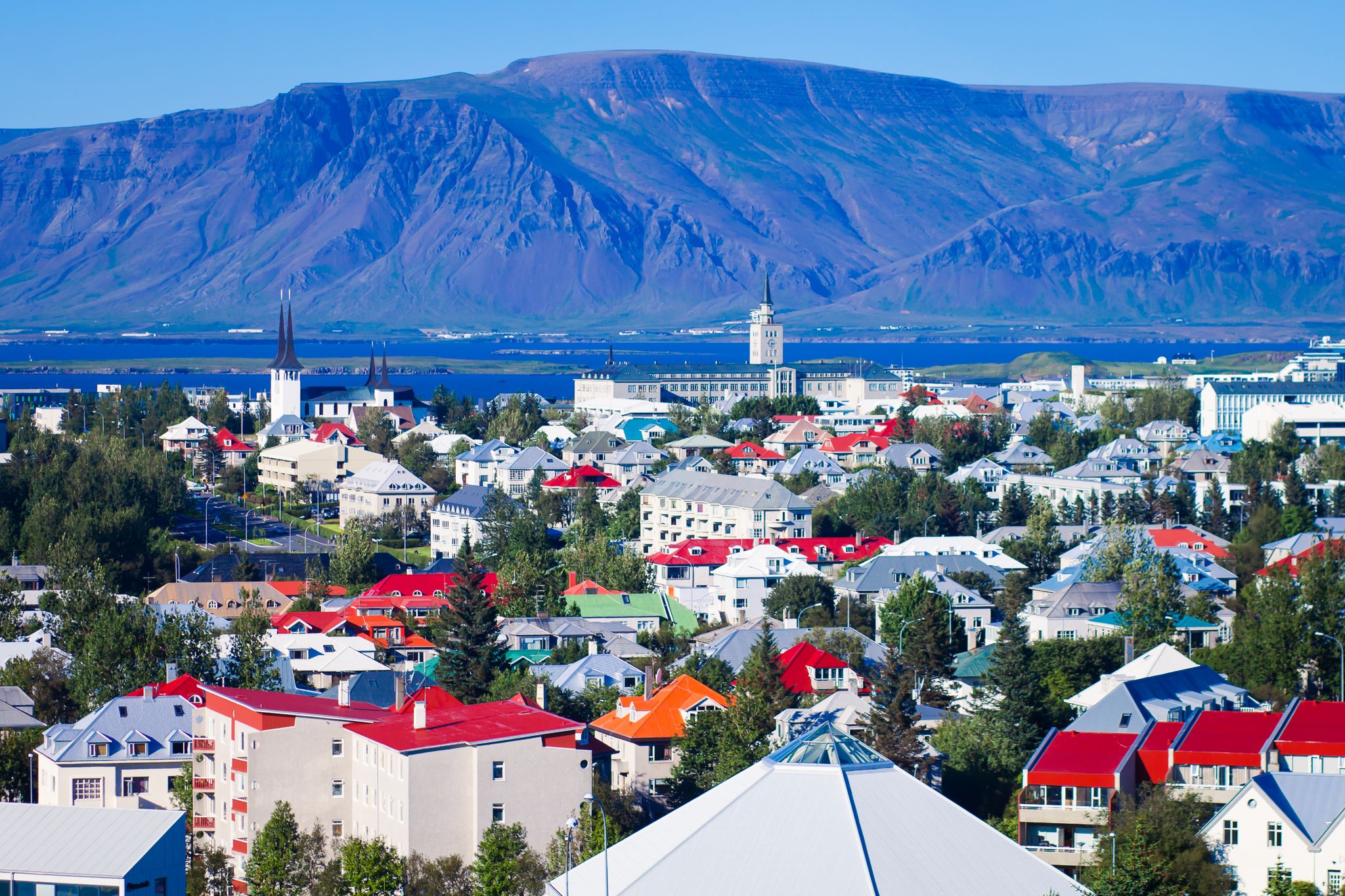
The best time to visit Reykjavik is summer. From June to August, you'll experience long daylight hours, including the Midnight Sun, mild temperatures, and a buzzing atmosphere perfect for exploring the city's attractions and nearby natural wonders. Summer also offers ideal conditions for hiking, whale watching, and enjoying Reykjavik's lively festivals.
That said, Reykjavik's charm knows no bounds, with each season offering its own unique appeal. Whether it's the renewal of spring, the energy of summer, the colors of autumn, or the magic of winter, there's always something unforgettable to experience. Let's explore the highlights of each season and discover the best time to visit Reykjavik in the sections below.
Spring in Reykjavik: Flower Blooms and Explorations
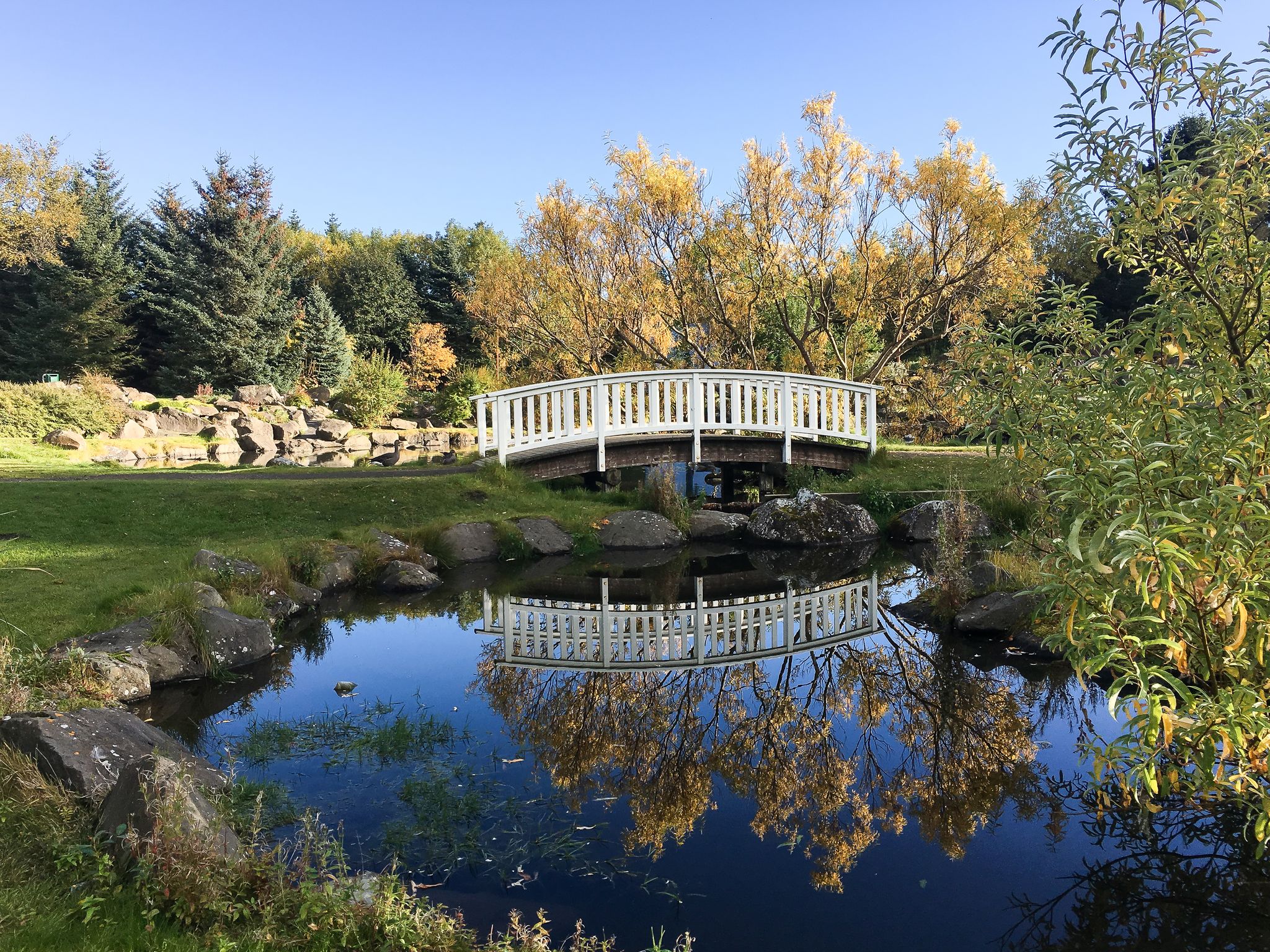
Spring in Reykjavik, from April to May, marks a beautiful transition as the city shakes off winter's chill. The best time to visit Reykjavik in spring is May, when blooming flowers and longer daylight hours make it perfect for outdoor explorations. With fewer crowds than summer, spring offers a serene and scenic backdrop for enjoying Iceland's natural beauty.
Take advantage of the pleasant temperatures, which generally range from 40 F to 50 F (4 C to 10 C), by visiting the city's stunning parks, such as the Reykjavik Botanical Garden. You can also embark on a scenic cycling tour or try a twin peaks ATV adventure from Reykjavik to fully immerse yourself in Iceland's breathtaking landscapes.
Spring is also a great time to witness the northern lights, as the darker evenings enhance visibility. Plus, with the shoulder season in full swing, you'll find budget-friendly options for accommodations and activities. Just remember to dress for the weather and check the forecast before packing to ensure a comfortable stay.
Summer in Reykjavik: Midnight Sun and Fun
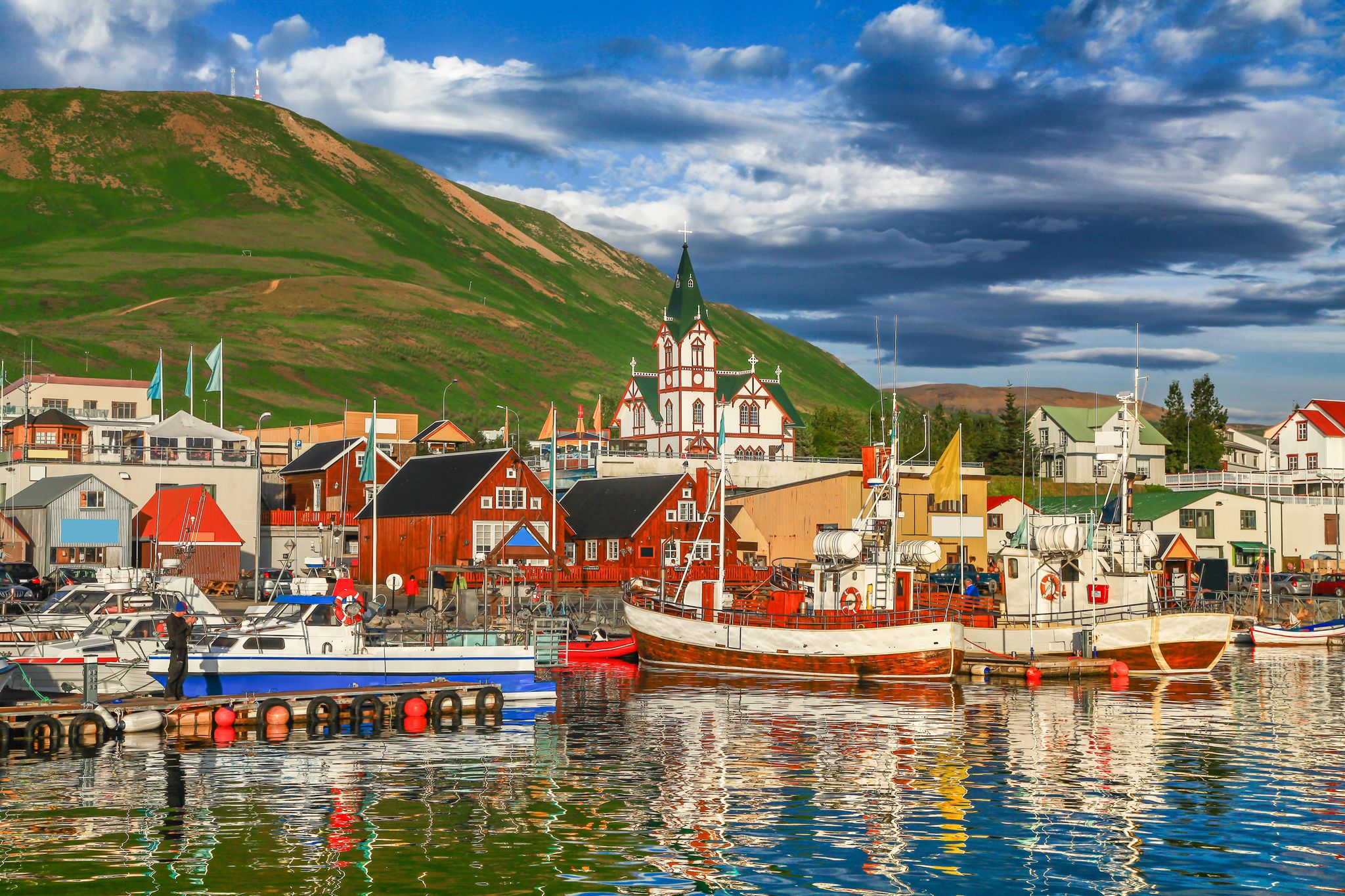
The best month to experience summer in Reykjavik is July, with the warmest weather, the Midnight Sun, and plenty of festivals and outdoor activities to enjoy. From June to August, Reykjavik temperatures range from 50 to 77 F (10 to 25 C). It's the perfect season for hiking, swimming in natural pools, and a day trip to the Golden Circle and Kerid Volcanic Crater.
One of the most magical aspects of summer is the midnight sun. Starting in late June, the sun shines nearly all night, creating a beautiful glow over the city. This natural wonder invites you to enjoy midnight hikes on trails like Mount Esja or a scenic adventure around the Reykjanes Peninsula. The constant daylight creates unforgettable moments and stunning views.
The city buzzes with cultural activities during summer, with many events and celebrations for everyone. Enjoy local music festivals or join the fun during Reykjavik Culture Night in August. The city also celebrates Reykjavik Pride, highlighting LGBTQ+ rights. Nature lovers can go on a Reykjavik whale-watching tour on a speedboat or spot puffins along the coastline.
However, be prepared for larger crowds and higher prices during the summer months. The popularity of outdoor activities means it's essential to plan ahead. Booking Reykjavik accommodations and tours in advance will help ensure a smooth and enjoyable visit.
Autumn in Reykjavik: A Serene Season of Color and Adventure
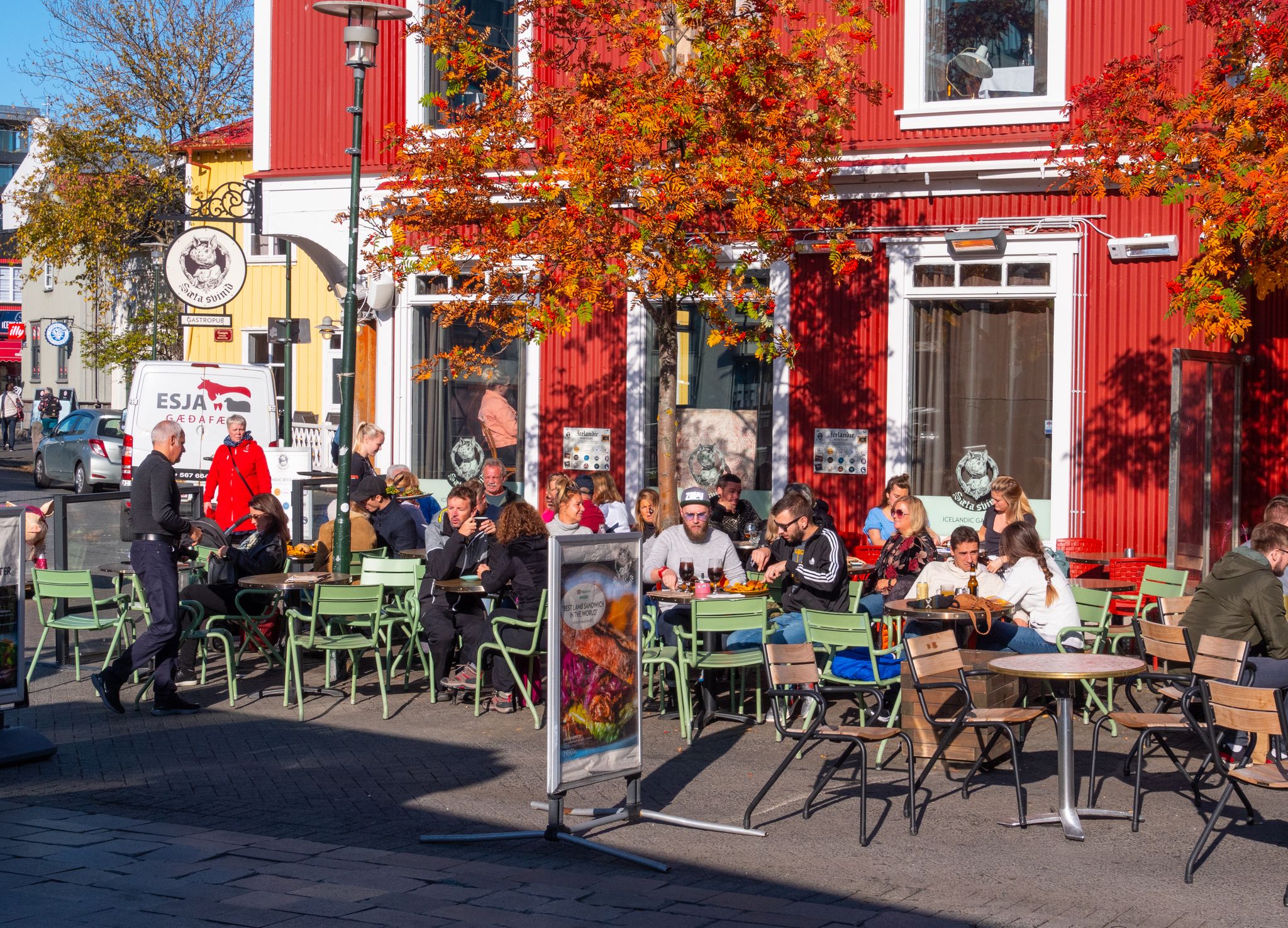
Autumn in Reykjavik, spanning September to October, is a charming shoulder season full of natural beauty and tranquility. The best month to visit Reykjavik in autumn is September September. This month brings beautiful fall colors, mild weather, and fantastic opportunities for outdoor adventures like hiking and Northern Lights viewing.
Temperatures during autumn typically range from 30 F to 40 F (-1 C to 4 C), perfect for enjoying outdoor activities without the summer crowds. This is an excellent time to take scenic walks along the coastline or visit local attractions. The stunning fall colors create a picturesque backdrop for photography and exploration.
Autumn also provides excellent opportunities to witness the northern lights, with longer nights enhancing visibility. As with spring, you’ll find more budget-friendly travel options, making it a great time for those looking to save while experiencing the city's beauty. Just be sure to dress warmly and check the weather forecast for an enjoyable visit.
Winter in Reykjavik: Northern Lights and Snowy Adventures

The best month to visit Reykjavik in winter is February. With long nights ideal for Northern Lights viewing, snowy landscapes, and thrilling activities like glacier hiking and ice cave tours, it’s the perfect time for a winter adventure.
Winter in Reykjavik lasts from November to March and offers a magical mix of experiences. Visitors can marvel at the mesmerizing northern lights while also enjoying cozy indoor pursuits, such as exploring museums and unwinding in charming cafes.
Additionally, Perlan's observation deck presents stunning panoramic views of the city, even in winter, allowing you to soak in the beauty of the city. You can delve into rich Icelandic cultural heritage at the National Museum of Iceland, featuring captivating artifacts and exhibitions, or explore the Reykjavik Maritime Museum to discover the island's storied seafaring traditions.
Outdoor enthusiasts can enjoy skiing, snowboarding, and snowmobiling tours in Reykjavik’s nearby mountains. With the right clothing and waterproof gear, you can stay warm and comfortable while enjoying these exhilarating adventures.
While winter brings colder temperatures, averaging between 20 F and 30 F (-6 C to -1 C), and shorter daylight hours, proper preparation ensures a delightful experience. By packing warm clothes and embracing the season's unique offerings, you're sure to make the most of your winter trip to Reykjavik!
Best Months To Visit Reykjavik: What to Expect Each Month

Understanding what each month in Reykjavik brings can help you plan your trip wisely for the best experience. Let's dive into the best months to visit and what you can expect during your stay in Iceland's capital city.
January in Reykjavik: Northern Lights and Midwinter Festival
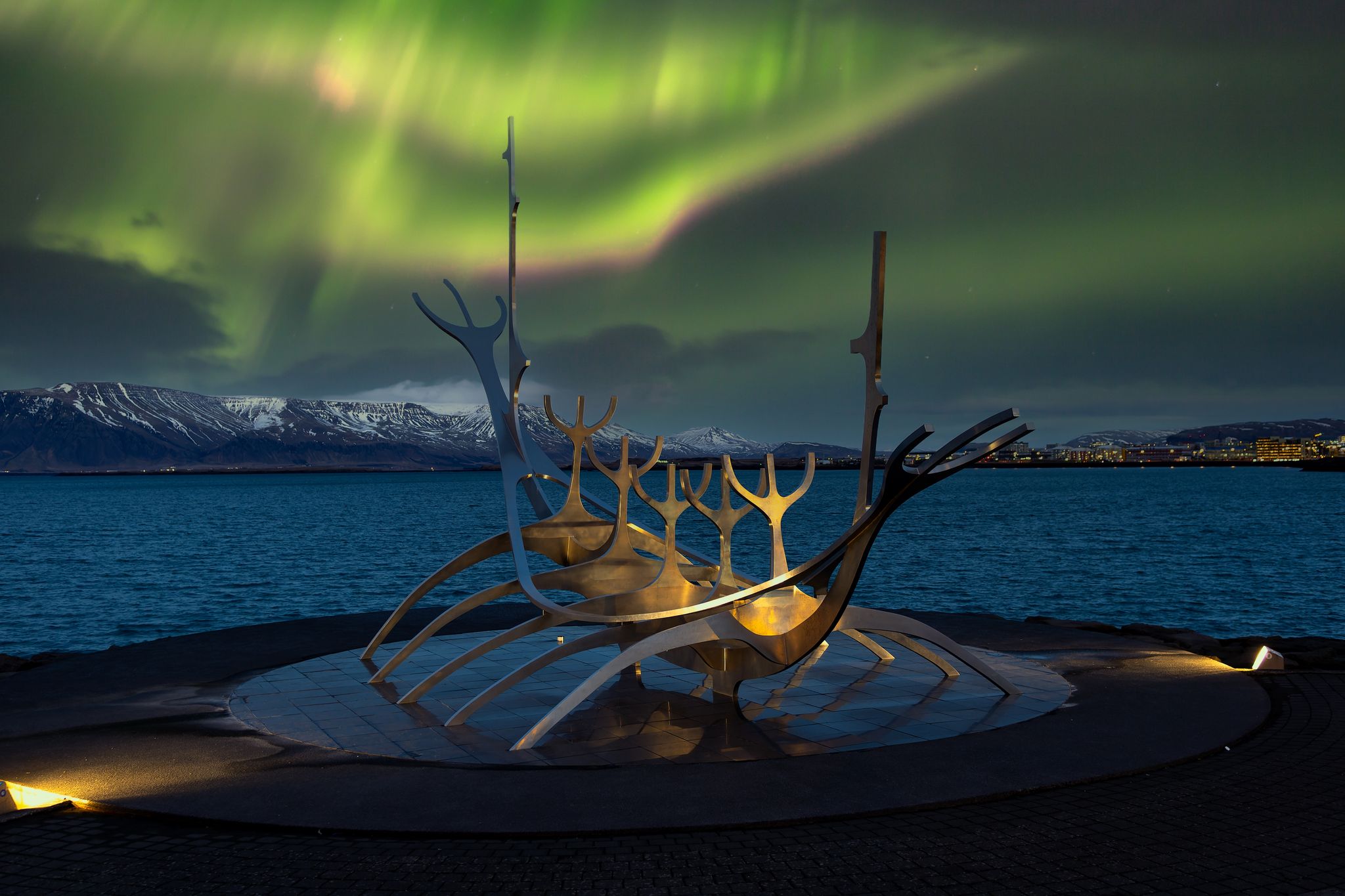
January in Reykjavik offers a quiet escape with fewer tourists, making it an ideal time to explore without crowds. The short, dark days provide excellent opportunities for a northern lights tour from Reykjavik, with the chance to witness this mesmerizing natural phenomenon during the long nights.
Additionally, January is perfect for winter photography, capturing the ethereal beauty of Iceland's landscapes dusted in snow. While the weather may be chilly, it's the best time for ice cave exploration, offering a unique adventure beneath the glaciers.
For a truly immersive experience, consider a six-day tour to see Iceland’s hidden gems. You'll have expert guidance to capture the best of Iceland's winter wonderland.
For those seeking indoor activities, don't miss the Thorrablot Midwinter Festival. Here, you can immerse yourself in Icelandic culture and cuisine, including traditional dishes like hangikjot, which is flavored smoked lamb, and brennivin, a local distilled beverage.
February in Reykjavik: Winter Lights and Northern Lights

Early in the month, the Winter Lights Festival illuminates the city with vibrant displays and cultural activities. From late February to early March, the Food and Fun Festival showcases local and international cuisine. This month also offers a chance to ride a bus from Reykjavik and watch the northern lights dancing across the Icelandic sky.
The snowy landscapes create a charming backdrop for photography enthusiasts despite the cold weather. As the month progresses, the city and the coastline start to defrost, offering a glimpse of spring on the horizon. February also welcomes the arrival of killer whales, providing opportunities for thrilling boat tours, wildlife photography, and wildlife tours in Reykjavik.
March in Reykjavik: Annual Beer Festival
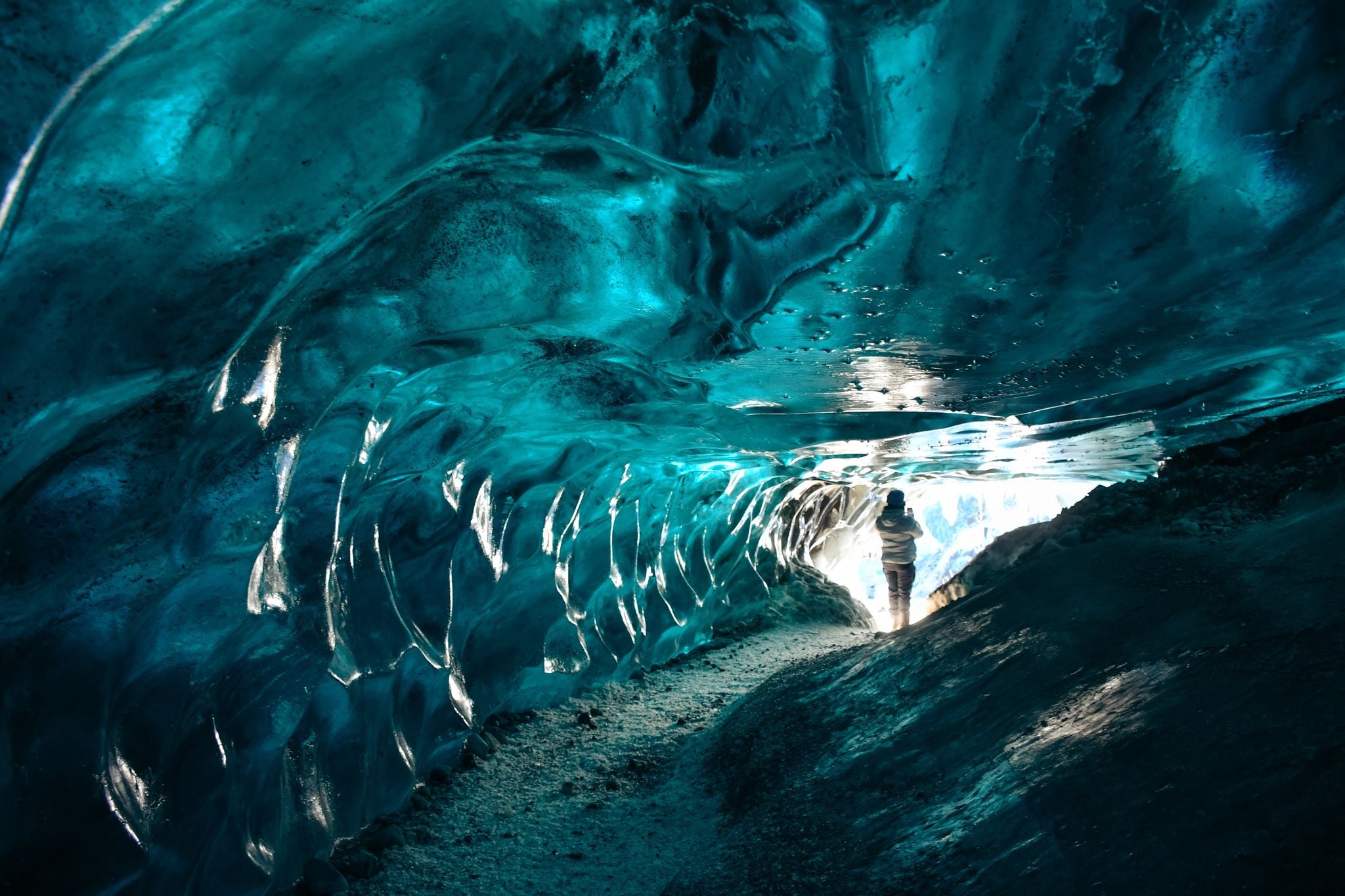
March in Reykjavik marks the transition from winter to spring, offering a blend of wintry activities and hints of warmer days ahead. This month is an ideal time to join a small group tour from Reykjavik to witness the northern lights while enjoying hot cocoa. This is because there are more geomagnetic storms, which make the lights more active and easier to see.
Despite occasional snowstorms and below-zero temperatures, unexpected sunshine may also grace the days. It's an ideal time for winter sports enthusiasts to try activities like ice caving, snowshoeing, and hiking before the season fades. Don’t miss the chance to join a glacier hiking tour and enjoy the landscape from Reykjavik for an unforgettable experience.
Additionally, March hosts the Annual Icelandic Beer Festival, adding excitement to your visit. This lively event features various local and international brews. Get a chance to sample unique craft beers and explore Iceland's growing brewing scene. With music, food pairings, and engaging activities, the festival fosters a festive atmosphere that unites locals and tourists.
April in Reykjavik: Embrace the Beauty of Springtime

April in Reykjavik welcomes the arrival of spring, accompanied by the spectacular return of local bird species like golden plovers. This month marks the beginning of the tourist off-season, offering lower prices and fewer crowds.
While daylight extends to about 14 hours, weather conditions can vary from rain to snow, so it's wise to pack accordingly. A small group walking tour in Reykjavik allows for exploration as roads become more accessible. However, the chances of seeing the northern lights decrease with the increased daylight.
May in Reykjavik: Spring in Full Bloom
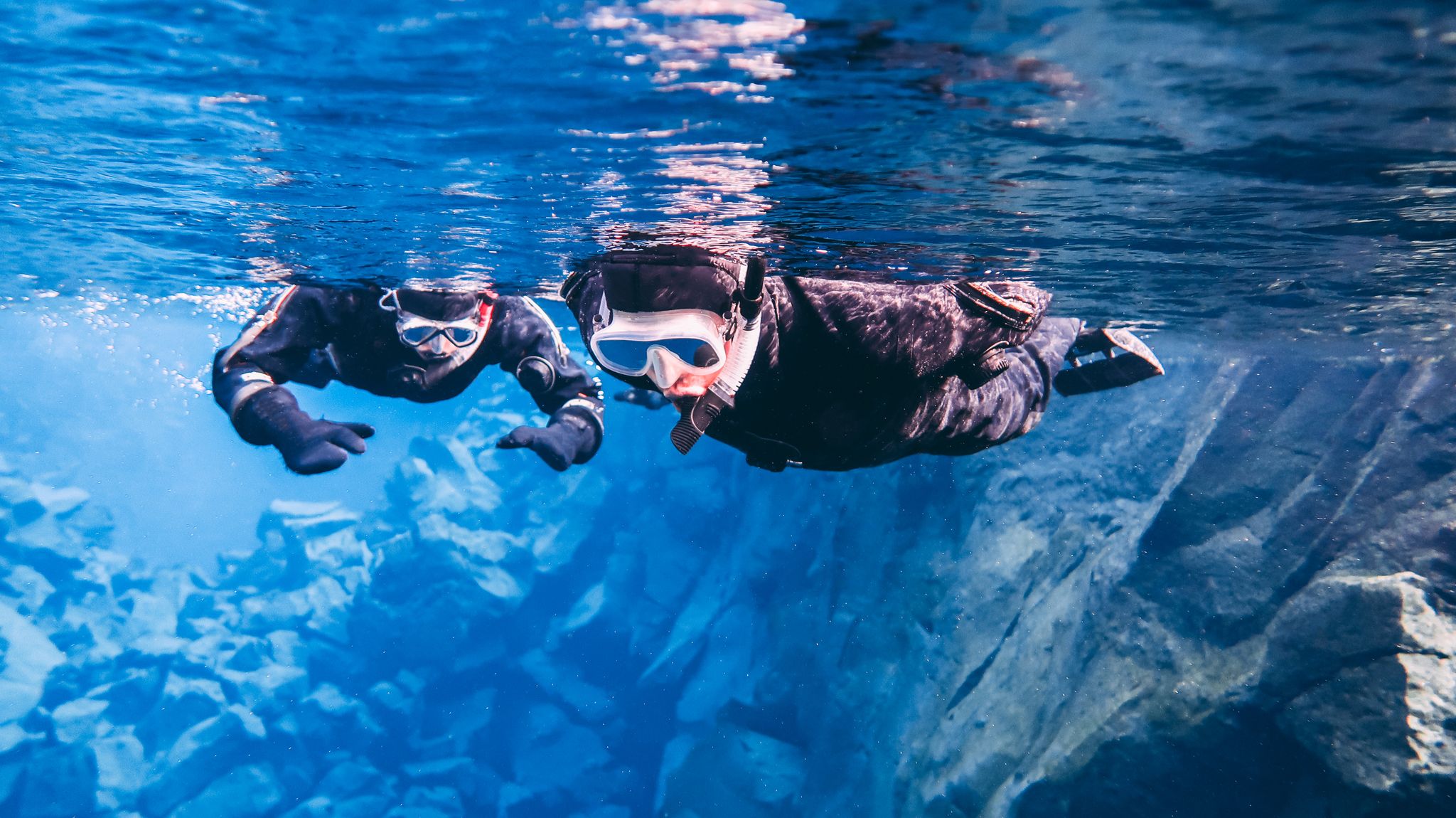
May in Reykjavik is when spring is in full swing, with temperatures rising and daylight hours extending to up to 20 hours by the end of the month. While temperatures typically range from 34 F to 52 F (1 C to 11 C), the chance of snow diminishes.
May is ideal for outdoor adventures like cave exploration, glacier hiking, and snorkeling. You can also enjoy a scuba diving experience between Silfra tectonic plates or a horseback riding tour from Reykjavik. Other options include whale and bird watching as migratory birds return and whales move north to feed.
June in Reykjavik: Experience the Magic of the Midnight Sun

June in Reykjavik celebrates the arrival of summer, bringing longer days and bustling attractions. While it's the peak travel season, it's also one of the best times to explore Iceland's natural beauty.
This month, the city hosts a variety of cultural activities and music festivals. For instance, the National Holiday of Iceland is celebrated with parades, concerts, and citywide fireworks. Additionally, Secret Solstice features a mix of local and international artists across various genres, providing something for everyone to enjoy.
Take advantage of the midnight sun phenomenon, which is best experienced from late May to early June. You can join a midnight sun ATV adventure from Reykjavik to see this beautiful natural wonder.
It's also prime time for camping, hiking, and wildlife watching, with opportunities to spot birds on sea cliffs and embark on whale-watching trips in Reykjavik. Plus, June opens many highland roads, perfect for self-drive adventures.
July in Reykjavik: Ideal Time for Adventure Seekers
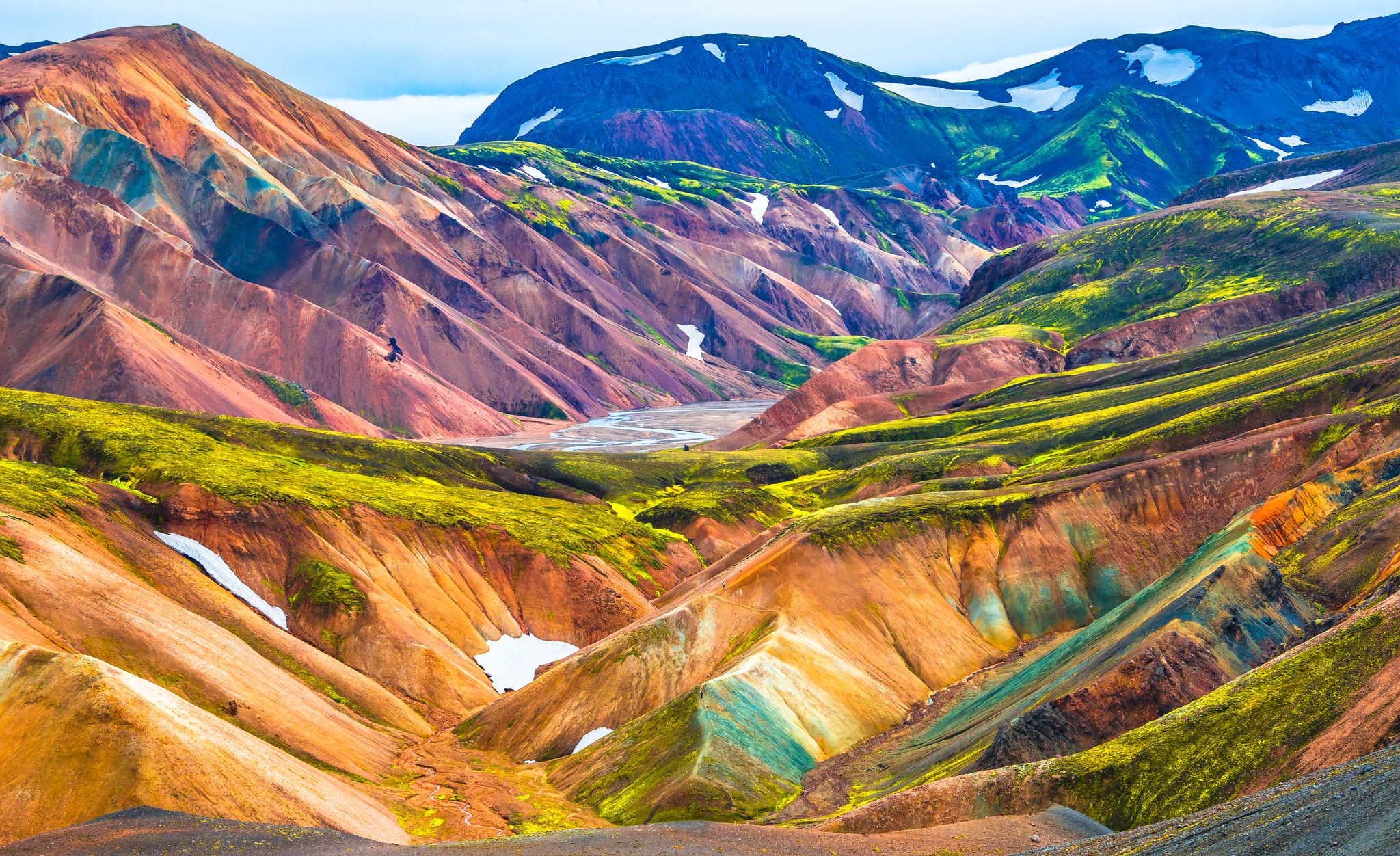
July in Reykjavik is a delightful time, with long days stretching until almost midnight. It's perfect for outdoor activities like camping and hiking. Consider embarking on a Landmannalaugar hike and a Valley of Tears tour, which offers stunning landscapes and a memorable hiking experience.
Alternatively, you might enjoy a private fishing tour from Reykjavik, where the thrill of catching Arctic char and brown trout awaits you in pristine surroundings. Lastly, the sun rises early, around 4 AM, offering fantastic conditions for nature photography enthusiasts.
With July being a summer month, it’s prime time for whale-watching tours, and with all roads snow-free, exploring by car is a breeze. You can easily get car rentals in Reykjavik to explore the city at your own pace. However, keep in mind that July is the busiest tourist month, so consider visiting earlier in the month for a slightly quieter experience.
August in Reykjavik: Venture into Iceland's Stunning Nature
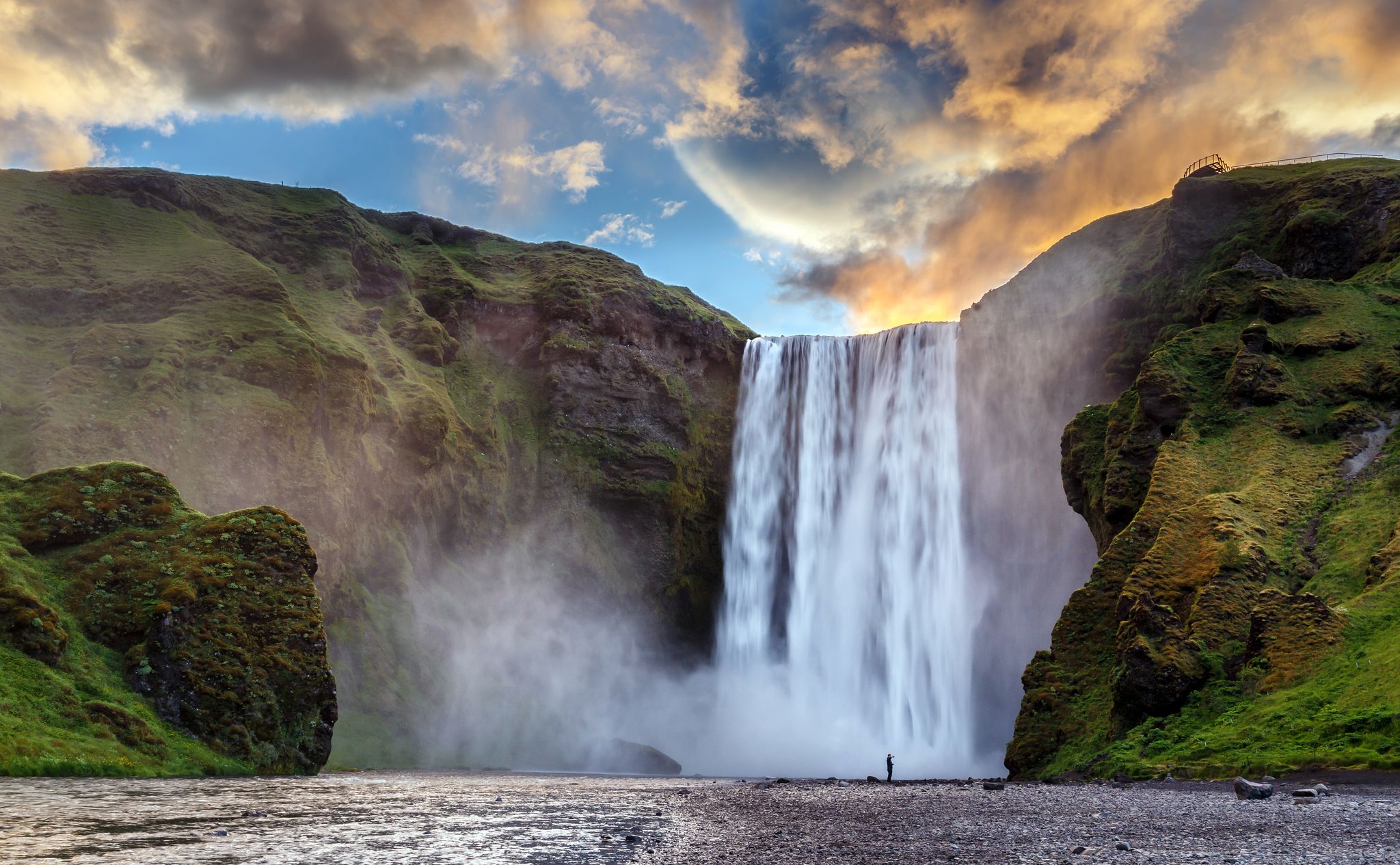
August in Reykjavik is an exciting time, bustling with events and outdoor adventures. With access to Iceland's wilderness at its peak, you can explore the rugged beauty of glaciers like Vatnajokull and Solheimajokull, the iconic volcanoes such as Eyjafjallajokull and Hekla, and breathtaking waterfalls like Skogafoss and Gullfoss.
Though still unpredictable, the weather is generally warm, making it ideal for hiking and self-drive holidays. Consider hiking the Southern Iceland trail or the stunning Landmannalaugar region to experience the incredible landscapes fully. It's also one of the peak tourist months, so expect lively festivals like Reykjavik Pride and Reykjavik Culture Night.
September in Reykjavik: A Time for Tranquil Escapes

September in Reykjavik offers a peaceful getaway with fewer crowds and mild weather. While temperatures range from 41 F to 50 F (5 C to 10 C), the city sees a decline in tourist numbers, making it an ideal time to explore without the crowds.
With the northern lights making a comeback, it's one of the best times for photographers and nature enthusiasts to witness this spectacular phenomenon. Additionally, September is perfect for a guided whale-watching experience from Reykjavik before winter sets in.
October in Reykjavik: Embrace Autumn Hues and Aurora Views
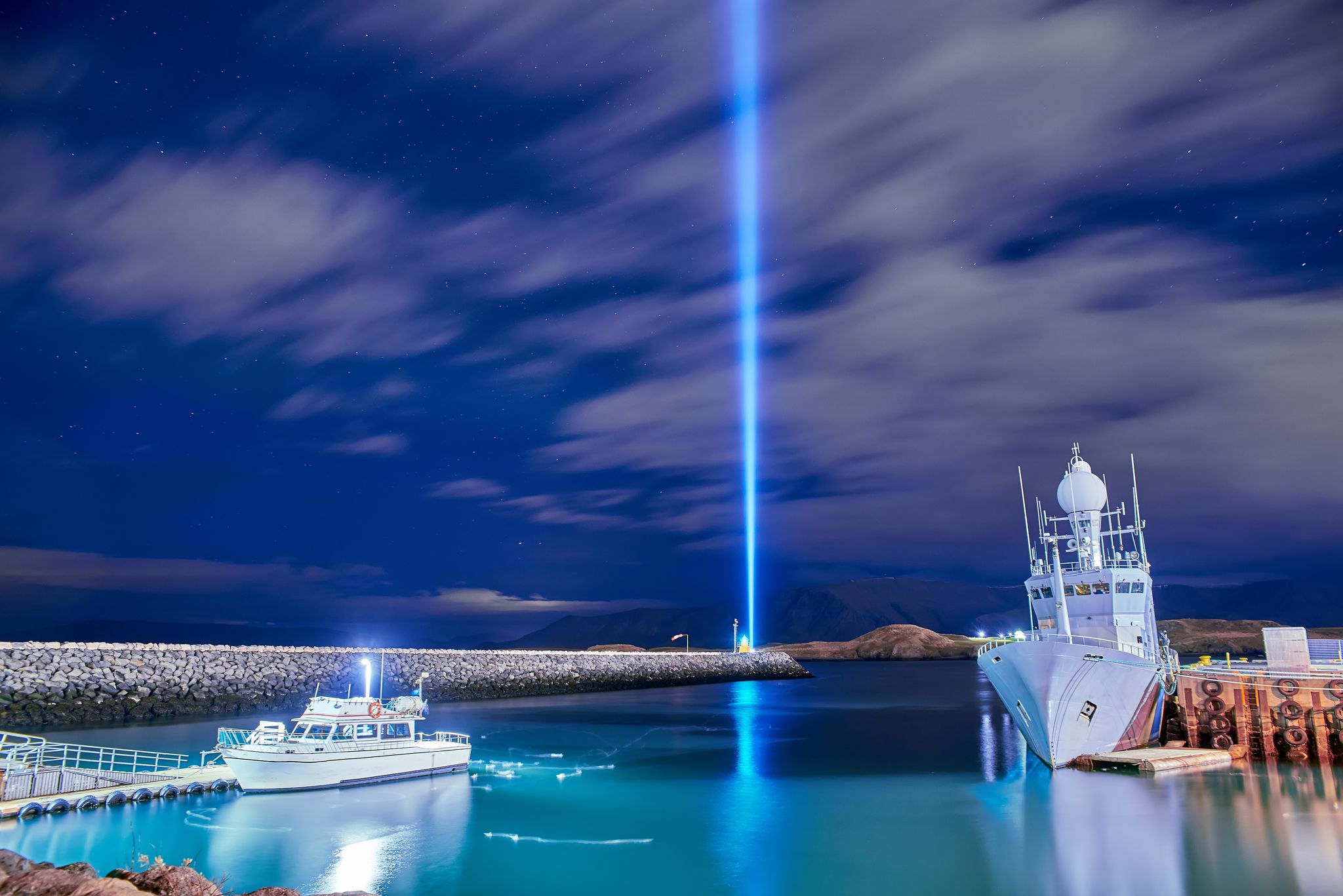
October in Reykjavik offers a picturesque transition into autumn, with vibrant colors painting the landscape as temperatures begin to drop. It's an ideal time to experience the northern lights, especially in areas away from city lights. With fewer visitors around, you can enjoy the tranquility of Iceland's natural beauty.
While whale-watching tours wind down for the season, landscape photographers will find endless opportunities amidst the changing weather and stunning vistas. Don't miss scenic spots like Tjornin Lake and the serene Imagine Peace Tower. Temperatures remain just above freezing in the city, making it a comfortable time to explore, with most roads clear for travel.
November in Reykjavik: Enjoy Winter Fun and Hot Springs
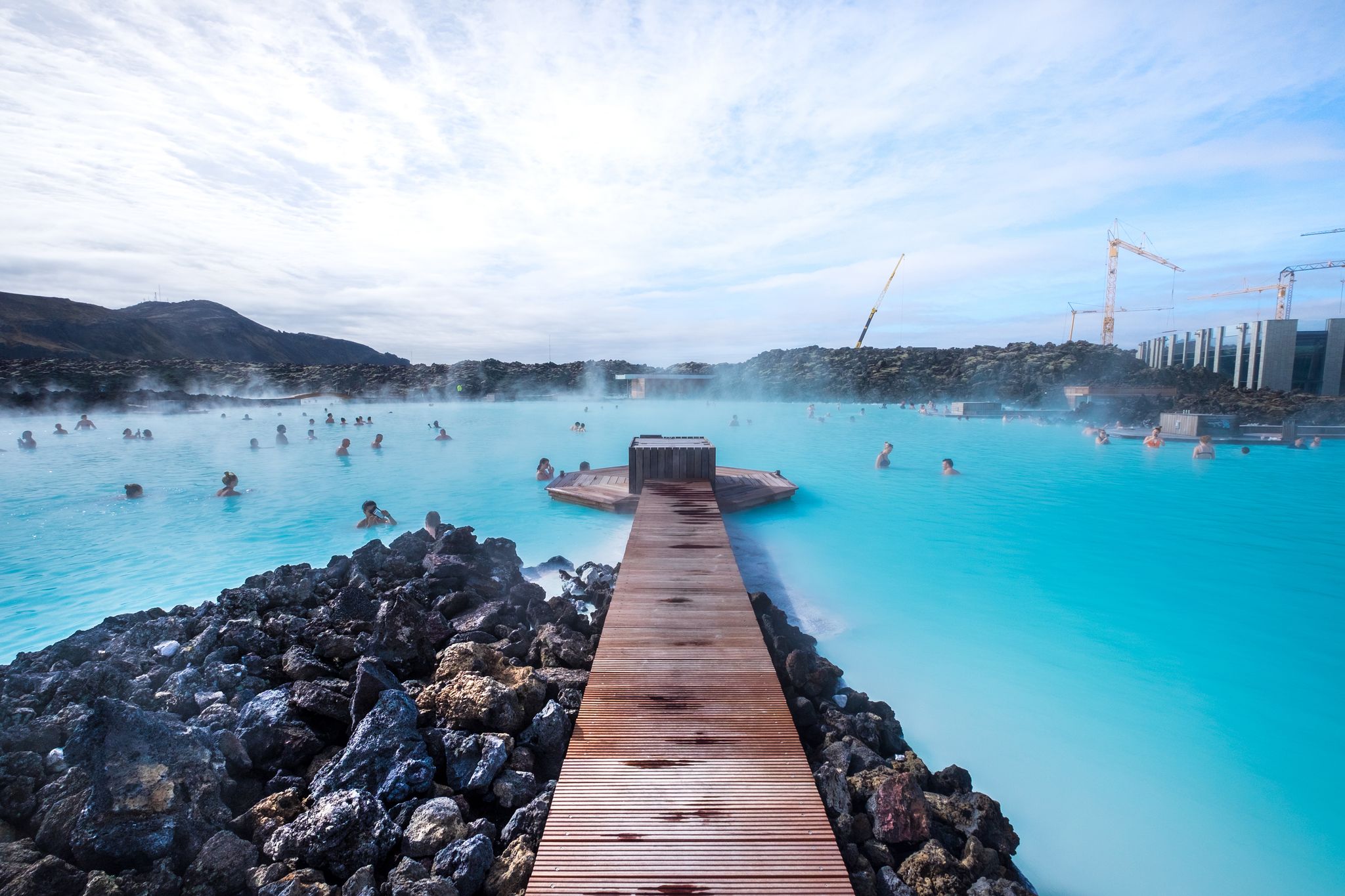
November in Reykjavik ushers in shorter daylight hours and dropping temperatures. It's an ideal time for indulging in the warmth of Iceland's famous hot springs. From Reykjavik, get a comfort package to visit the Blue Lagoon or the Reykjadalur Thermal River to take a dip amidst the serene, snowy landscapes.
Adventurers can explore the breathtaking beauty of the ice caves, such as the Crystal Ice Cave and the Katla Ice Cave, with the chill of the blue caves and majestic glaciers offering unforgettable experiences. For those seeking the dancing hues of the northern lights, November provides prime viewing opportunities on calm Icelandic nights.
December in Reykjavik: Festive Cheer and Northern Nights
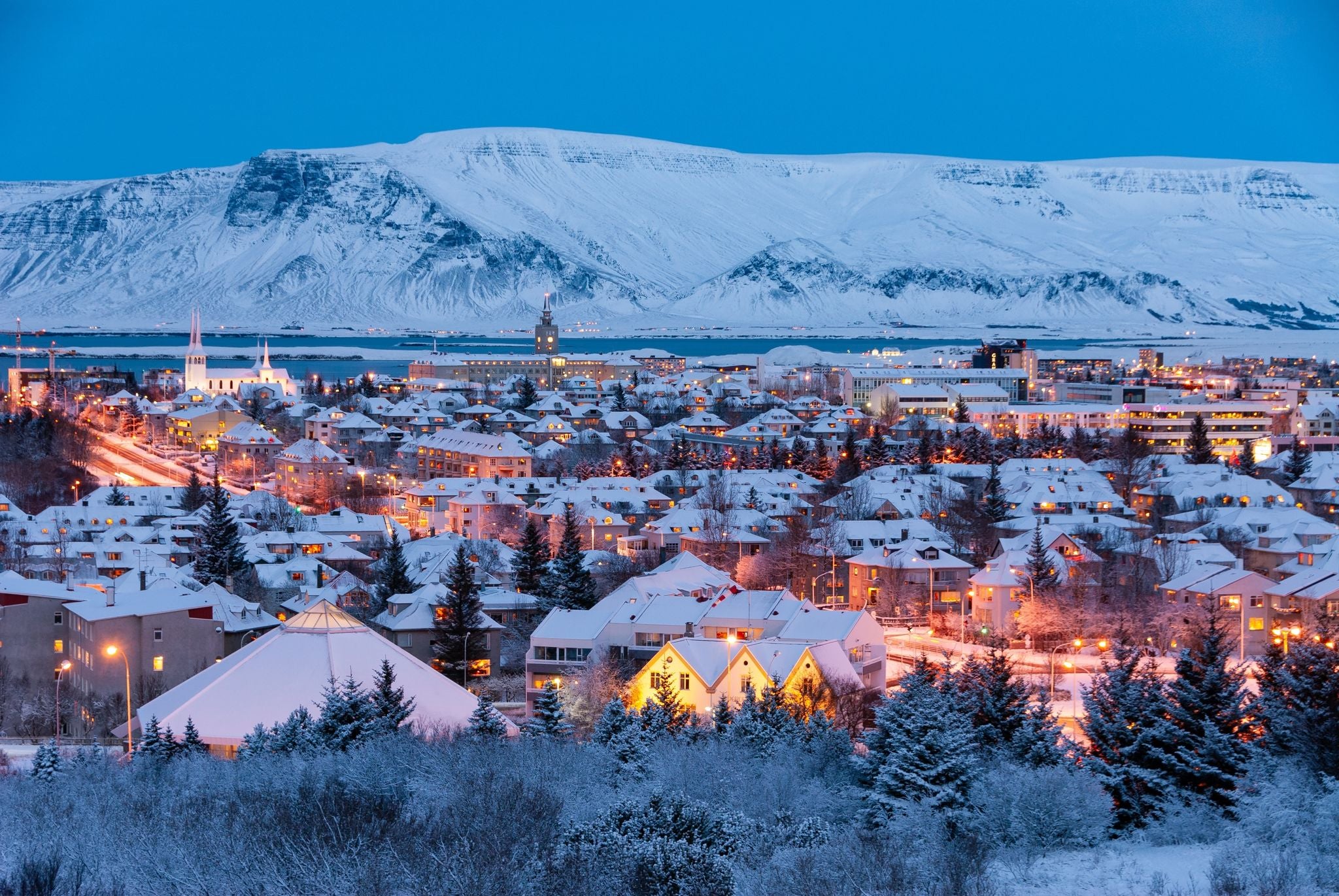
December in Reykjavik offers a mix of holiday joy and wintry wonder. With exciting New Year's Eve celebrations and picturesque Christmas villages, there's no shortage of festive ambiance.
While temperatures can drop as low as 14 F (-10 C), it's an ideal time to wear a warm suit and check out the spectacular northern lights from Reykjavik. Be sure to bundle up in layers to brave the chilly weather.
Best Time To Visit Reykjavik for Top Attractions and Activities
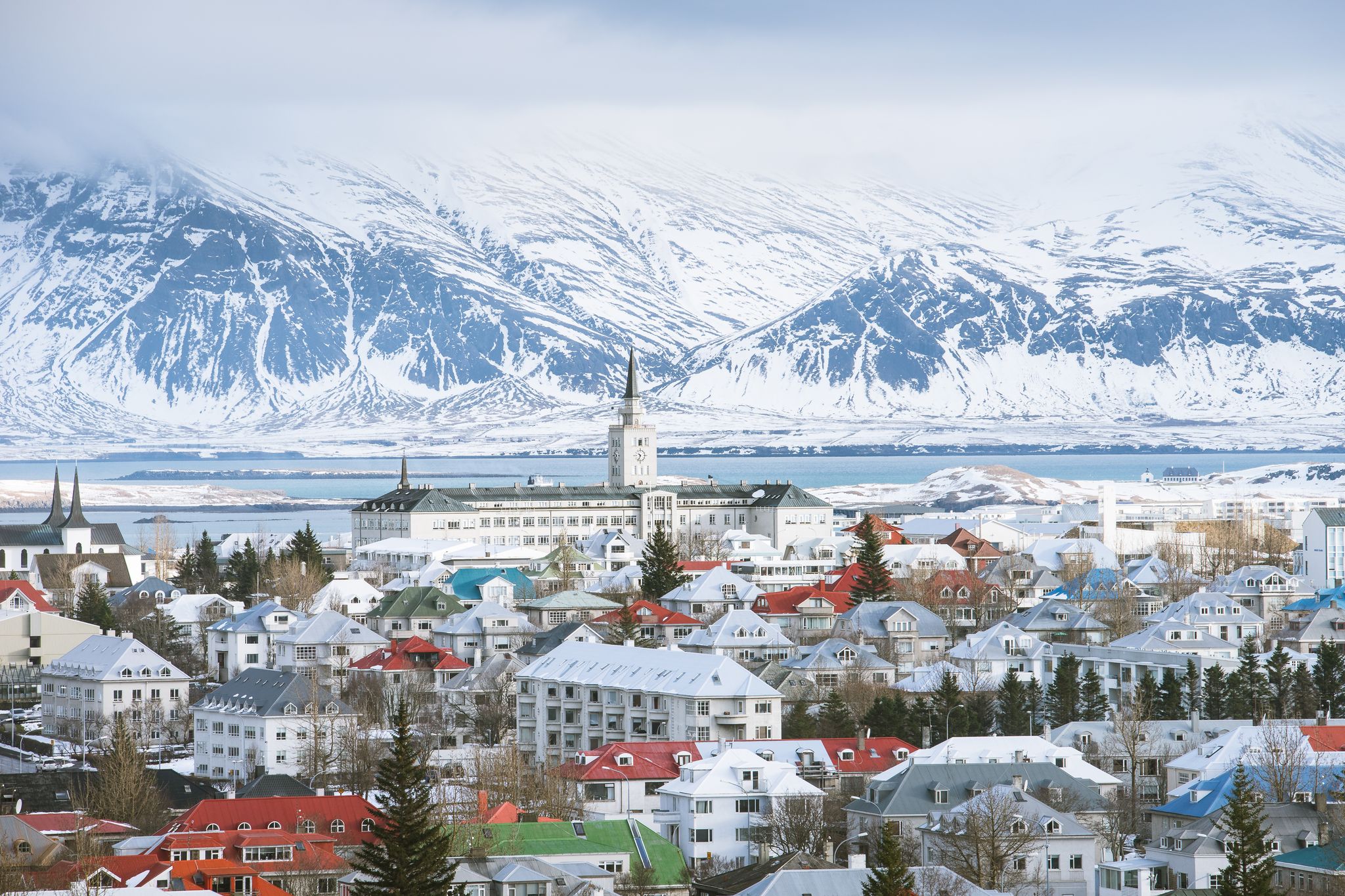
Planning an incredible trip to Reykjavik means more than just packing your bags. It's about timing your visit to align with the city's vibrant culture, iconic attractions, and the perfect times for various tours and activities in Reykjavik.
Regardless if you're looking to relax in the Blue Lagoon, chase the northern lights, or explore the Golden Circle, timing matters. Discover the best times to visit Reykjavik for different things to do on your Icelandic getaway.
Best Time To Visit Reykjavik for the Northern Lights
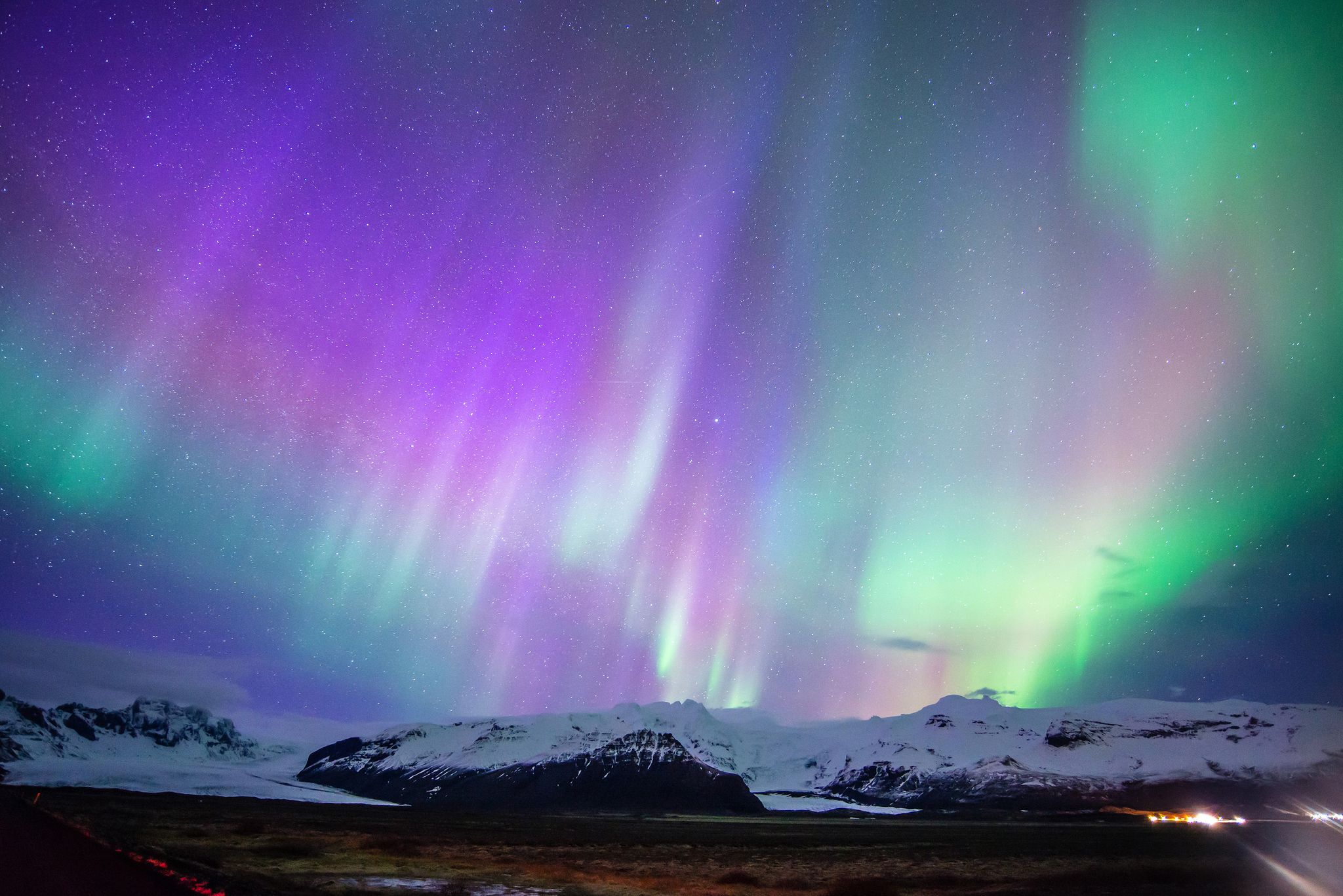
Go on a trip from Reykjavik to view and capture the northern lights illuminating Iceland's skies from late September to late March. Northern lights tours in Reykjavik offer a captivating and unique celestial spectacle. While winter nights boost your chances of spotting this phenomenon, sightings aren't guaranteed due to its unpredictable nature.
For the best northern lights viewing, seek darkness, clear skies, and solar activity. While mid-October to March offers more darkness, Iceland's unpredictable weather can affect visibility. To boost your chances, plan visits when day and night are equal, ideally booking a guided northern lights tour from Reykjavik from late September to late March.
Best Time To Visit Reykjavik for the Blue Lagoon

The best time to visit Reykjavik for the Blue Lagoon is summer, from June to August. This season is when the mild weather enhances the outdoor experience, and the Midnight Sun adds a magical touch to your visit. While summer brings more crowds, winter offers a quieter, cozy experience, and fall provides a serene retreat with snow-dusted landscapes.
Exploring Iceland's wonders wouldn't be complete without a dip in the famous Blue Lagoon. Its stunning milky-blue waters, enriched with minerals, make it a year-round must-see. Book your Blue Lagoon ticket or a combined Blue Lagoon and northern lights tour from Reykjavik to enhance your experience at this iconic destination.
Aim for early mornings, like 8:00 or 9:00, or evenings to avoid the crowds. These times ensure ample space in the pool, allowing you to unwind in peace. With limited occupancy, planning your visit during quieter periods guarantees a truly peaceful experience enveloped in the calming embrace of the Blue Lagoon's waters.
Best Time To Visit the Golden Circle in Reykjavik
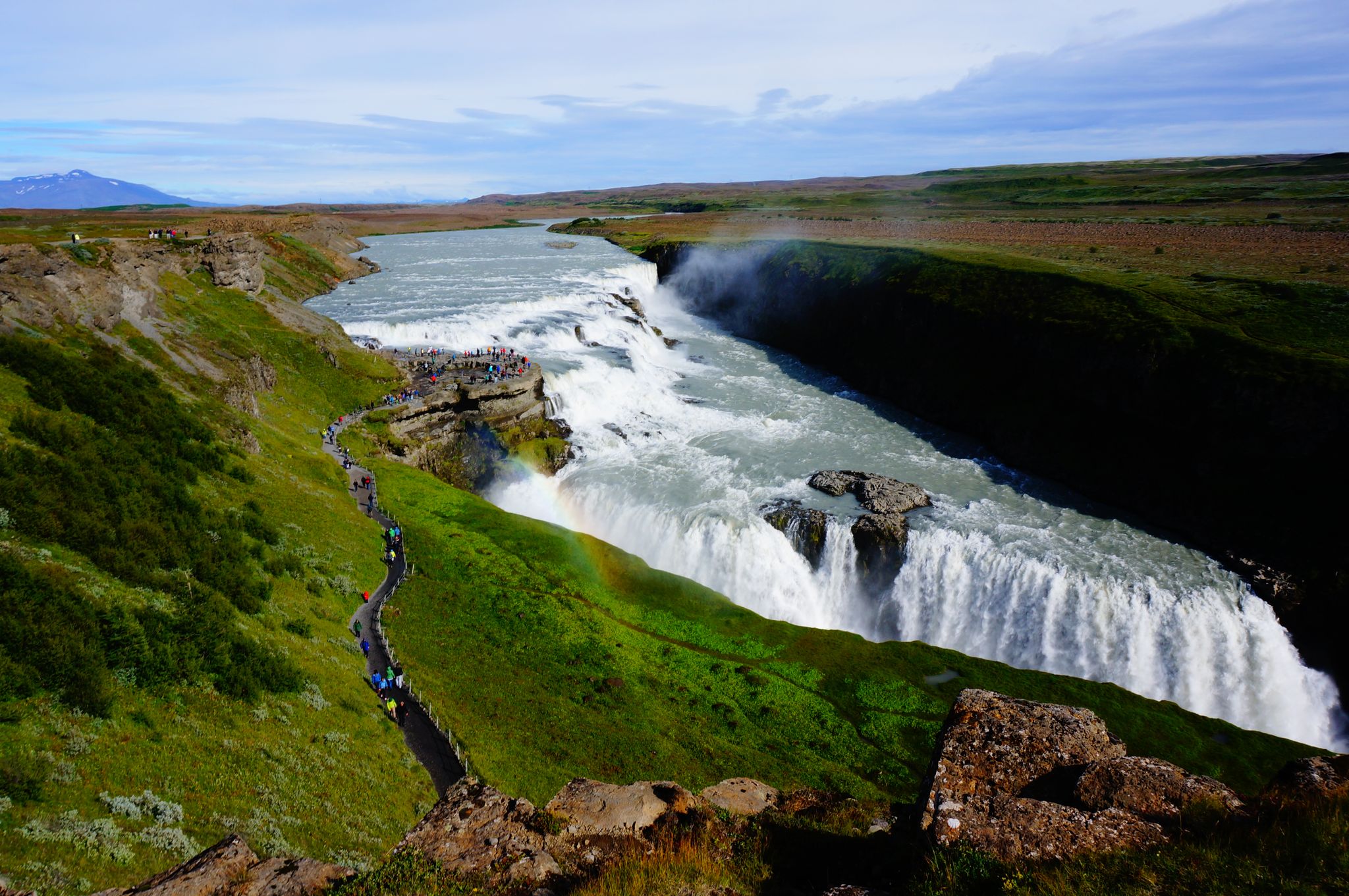
Exploring the Golden Circle is a must during your visit, especially during the shoulder seasons of spring and autumn. Embark on a tour of the Golden Circle from Reykjavik to experience this popular tourist route in Iceland. Visit the stunning attractions, including Thingvellir National Park, the geysers of Haukadalur, and the majestic Gullfoss waterfall.
Winter blankets the landscape in enchanting snow and frost, creating a dramatic setting. In contrast, summer allows for leisurely walks and extended stays at each attraction. Expect crowds at popular spots like Thingvellir, Strokkur, and Gullfoss during peak summer.
For a more serene experience, consider visiting in April, May, September, or October, just before or after the summer peak. This timing ensures a quieter visit, allowing you to immerse yourself fully in the Golden Circle's natural marvels.
Best Time To Visit Reykjavik for Whale Watching
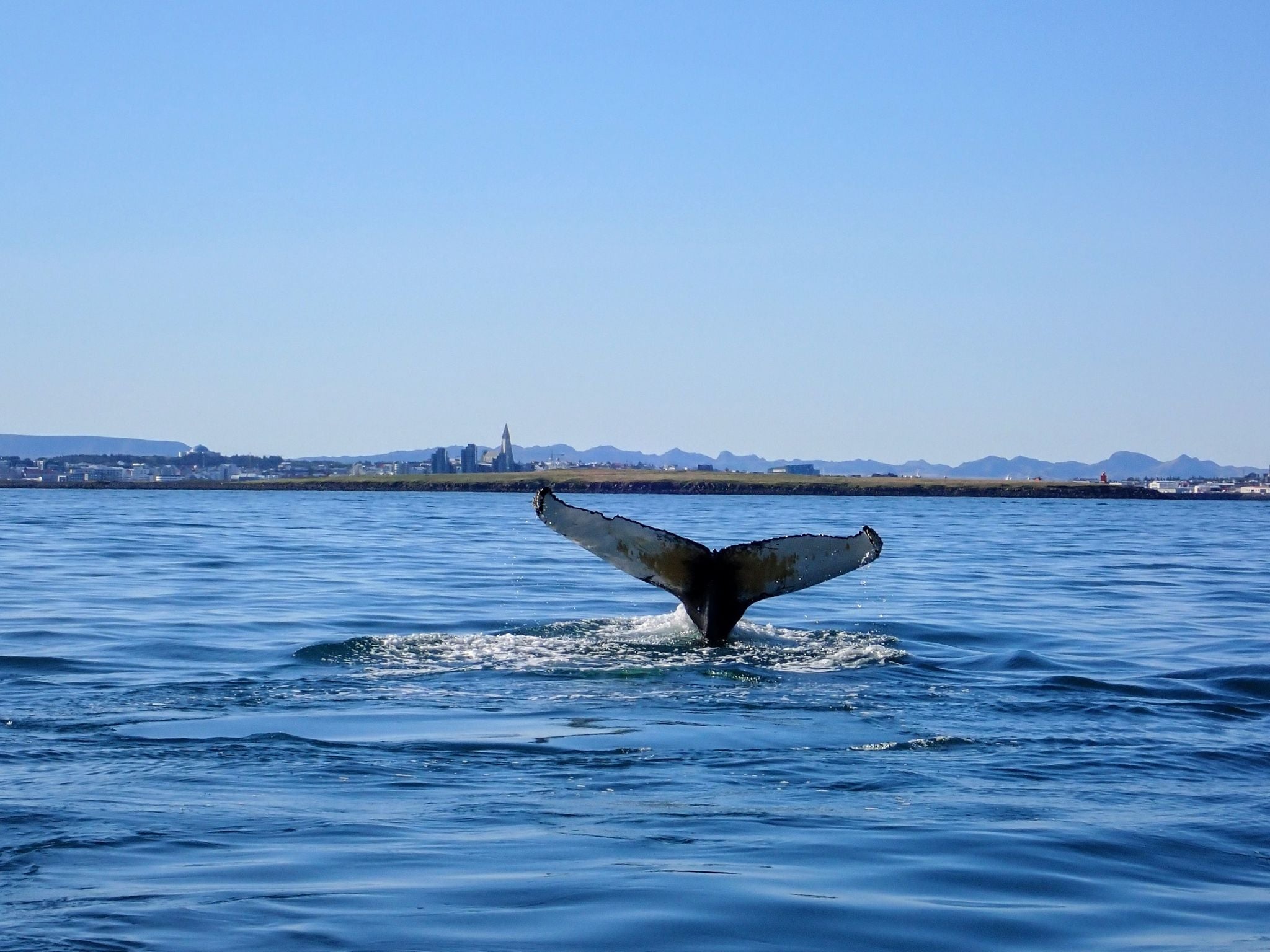
Don’t miss joining a whale-watching excursion while you’re in Reykjavik, but timing is crucial to maximize your chances of spotting these magnificent creatures. The optimal time for a classic whale-watching tour from Reykjavik is between May and August. This period coincides with the whales' migration patterns.
During this period, you can encounter various whale species, including minke, humpback, sperm, and Cetacea whales. There is also the possibility of spotting dolphins and orcas during boating trips. A visit to the museum called the Whales of Iceland is recommended for a deeper dive into the world of whales, where life-sized whale models and interactive exhibits await.
Summer, particularly from June to July, is also ideal for whale watching, as there are more minke whale and dolphin sightings. Additionally, orcas can be spotted along the Snaefellsnes peninsula, offering a diverse whale-watching experience across Iceland's coastal regions.
Best Time to Visit Reykjavik's Hot Springs
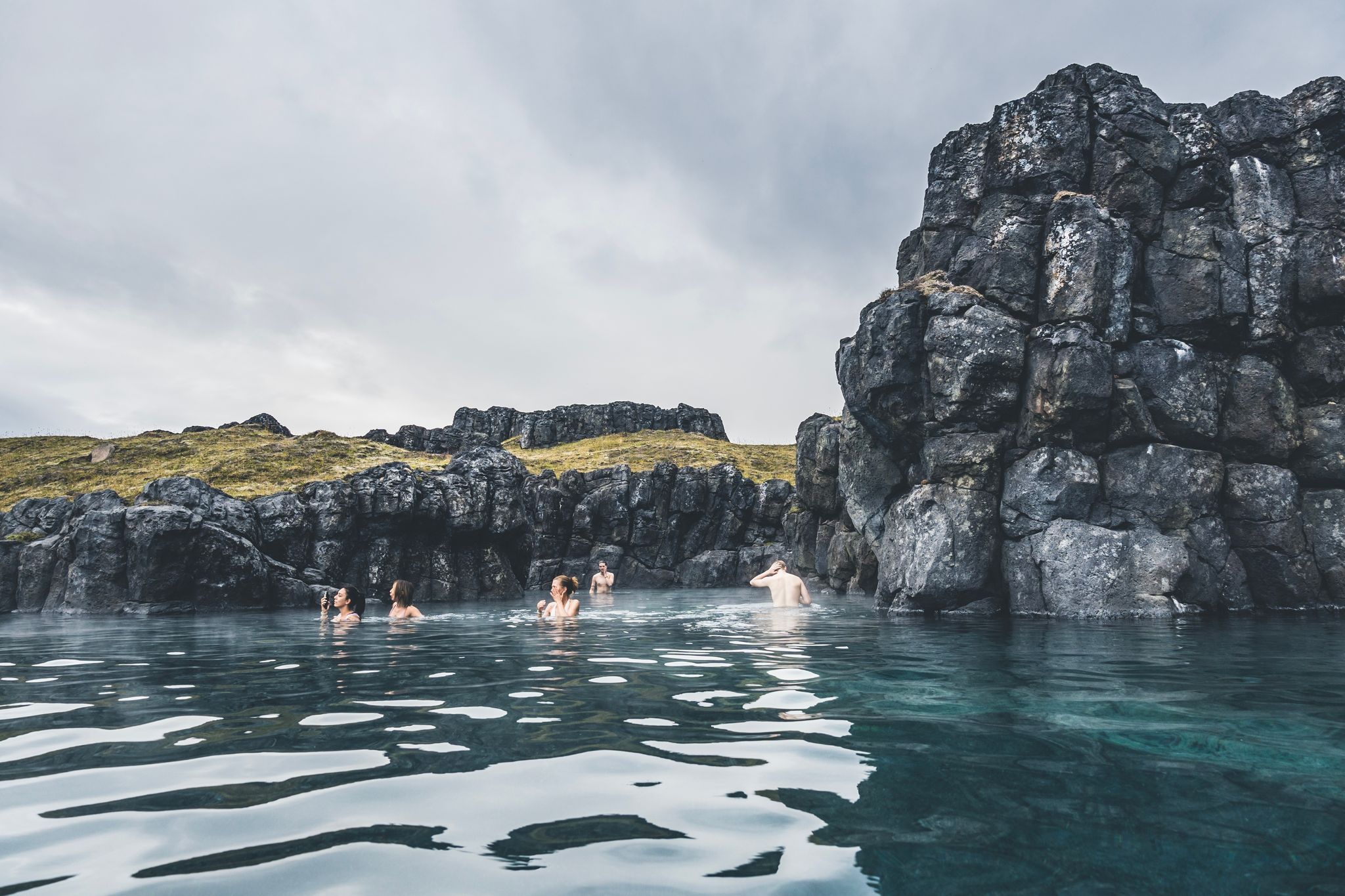
Make the most of your hot spring experience in Reykjavik by knowing the best times to visit. While these natural wonders are available year-round, choosing the right season can significantly enhance your enjoyment.
For a peaceful visit, consider going in early fall, around September or early October. You'll enjoy the warmth of the hot springs without summer crowds or travel restrictions. This is a perfect time to get a Sky Lagoon entrance ticket for a serene experience in one of Iceland's beautiful geothermal lagoons.
Summer provides easier access to remote hot springs, such as the serene Secret Lagoon and the scenic Reykjadalur Hot Springs, perfect for secluded relaxation and hiking adventures. In winter, pamper yourself with a unique bathing experience in the Blue Lagoon after a day of snowy activities, enjoying the contrast between the chilly air and warm, mineral-rich waters.
If you're seeking hidden gems, September and early October are ideal. These months allow you to discover Iceland's secluded hot springs before winter.
Best Time To Visit Reykjavik for Glacier Walks and Ice Cave Tours
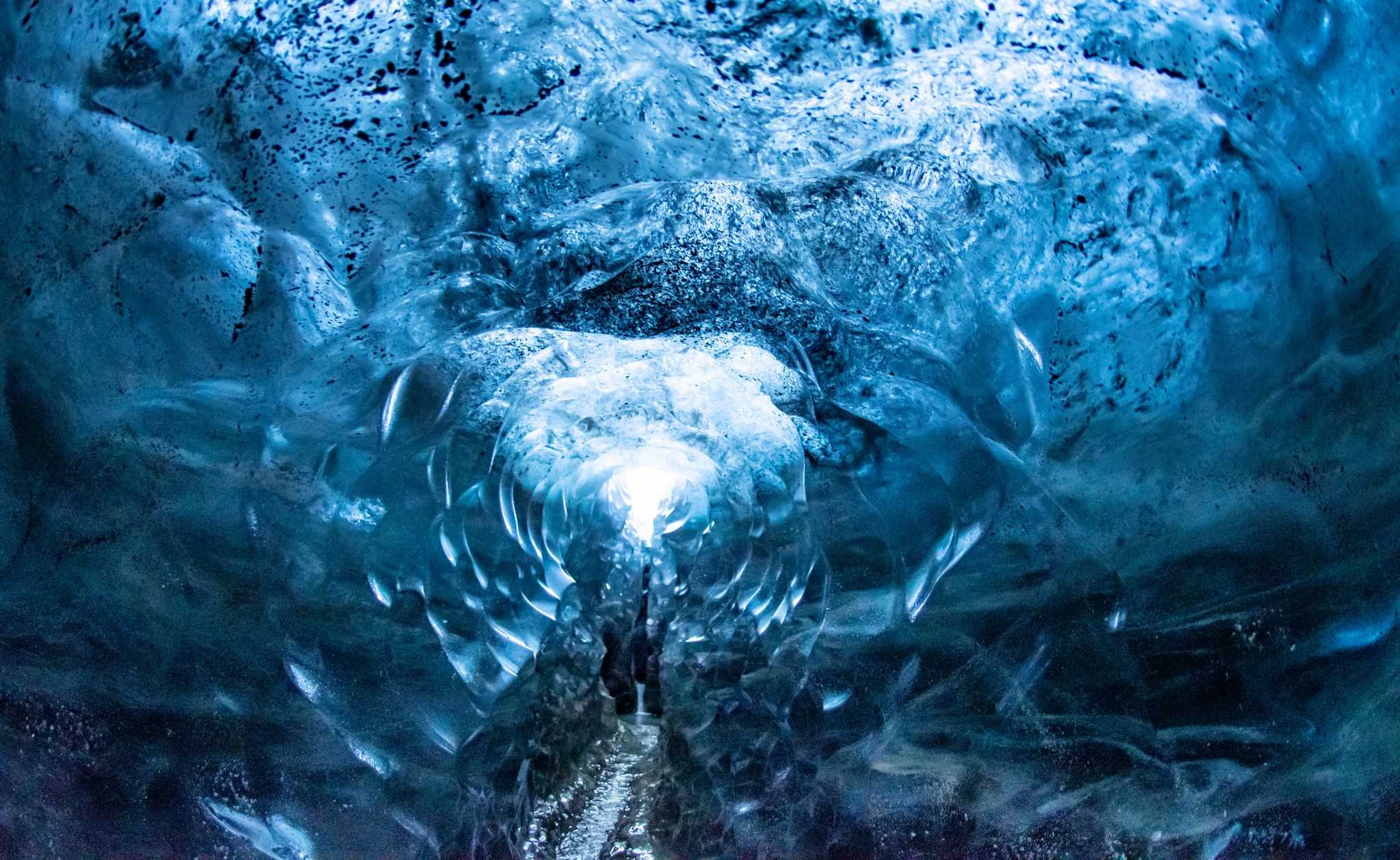
The best time to visit Reykjavik for glacier walks and ice cave tours is during the winter months, typically from mid-November to early March. During this period, glaciers and natural ice caves are more stable and accessible for tours.
Winter, from mid-November to early March, is ideal for exploring ice caves like the Katla ice cave in the Kotlujokull glacier and the man-made tunnel in Langjokull. For those visiting in the summer, Perlan offers a unique opportunity to experience an artificial ice cave, providing a glimpse into the enchanting world of glaciers.
Iceland's diverse caves cater to various preferences, from blue to white or black ice glaciers. For safety reasons, it’s important to remember that exploring glacier ice caves independently can be unsafe, so always opt for guided tours.
Best Time To Visit Reykjavik for Hiking Tours
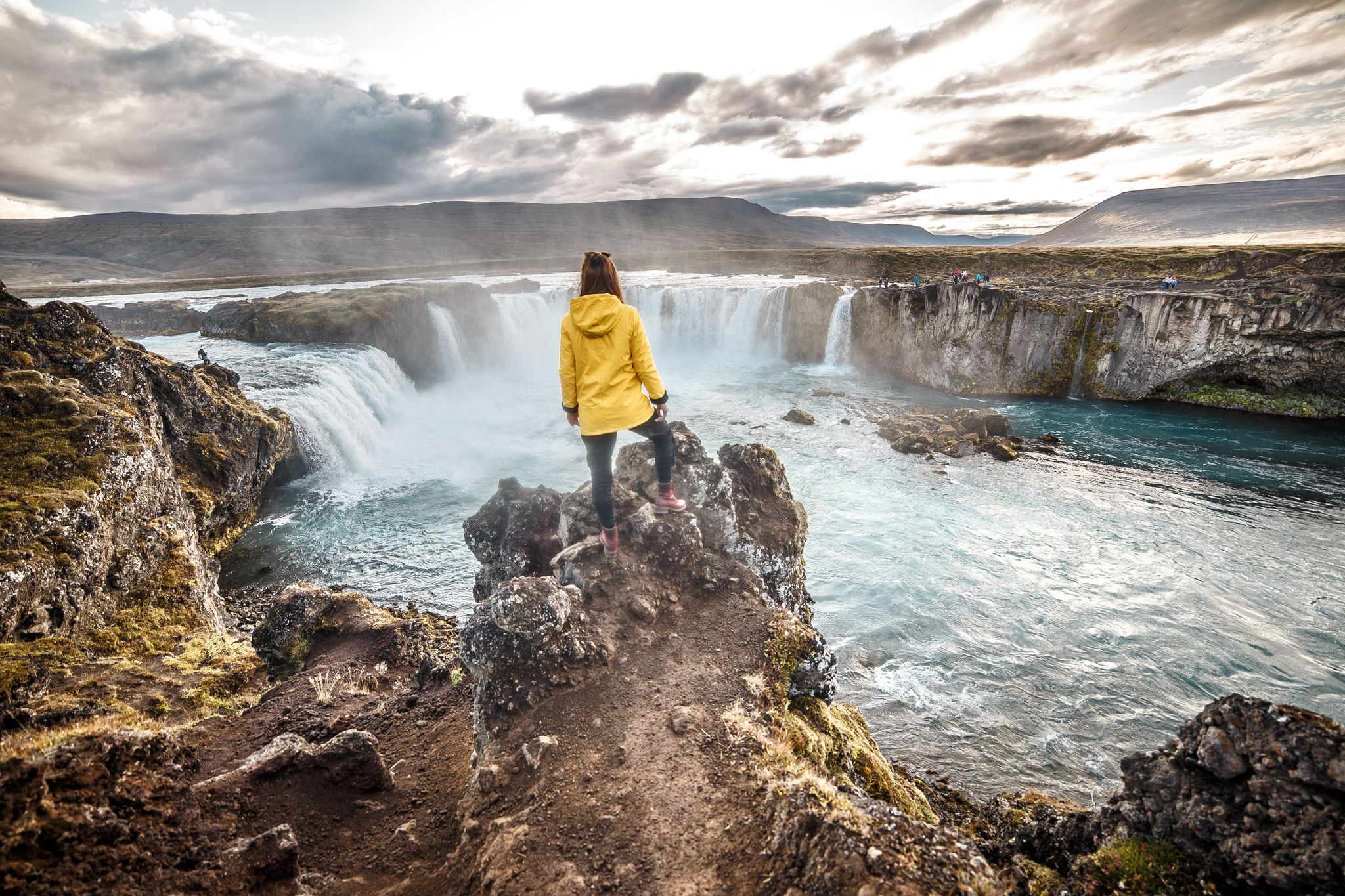
Knowing the best times to join hiking tours in Reykjavik is ideal, as trail accessibility depends on weather conditions. The excellent time for hiking tours spans from May to September when Iceland's trails are open and daylight hours are ample, fully immersing yourself in the island's natural splendor.
During this period, you can join a hike to Fagradalsfjall volcano. This private tour explores the majestic volcano with a local guide, offering insights into volcanic activity and stunning views of recent lava fields.
Another great option is the hike to Mt. Esja, which offers diverse terrain and panoramic views of the city and its fjords. This hike suits various skill levels and rewards you with beautiful vistas at the summit.
Exploring Iceland's highlands usually happens when the mountain roads open up after winter, typically from mid-June onwards. However, snow may still linger on some mountain trails in May, making specific routes, like the Storurd hike, challenging or inaccessible.
Remember to prioritize safety and stay informed about weather forecasts before embarking on any hiking excursion. Icelandic weather can be unpredictable, so be prepared for anything.
Best Time To Visit Iceland for Photography
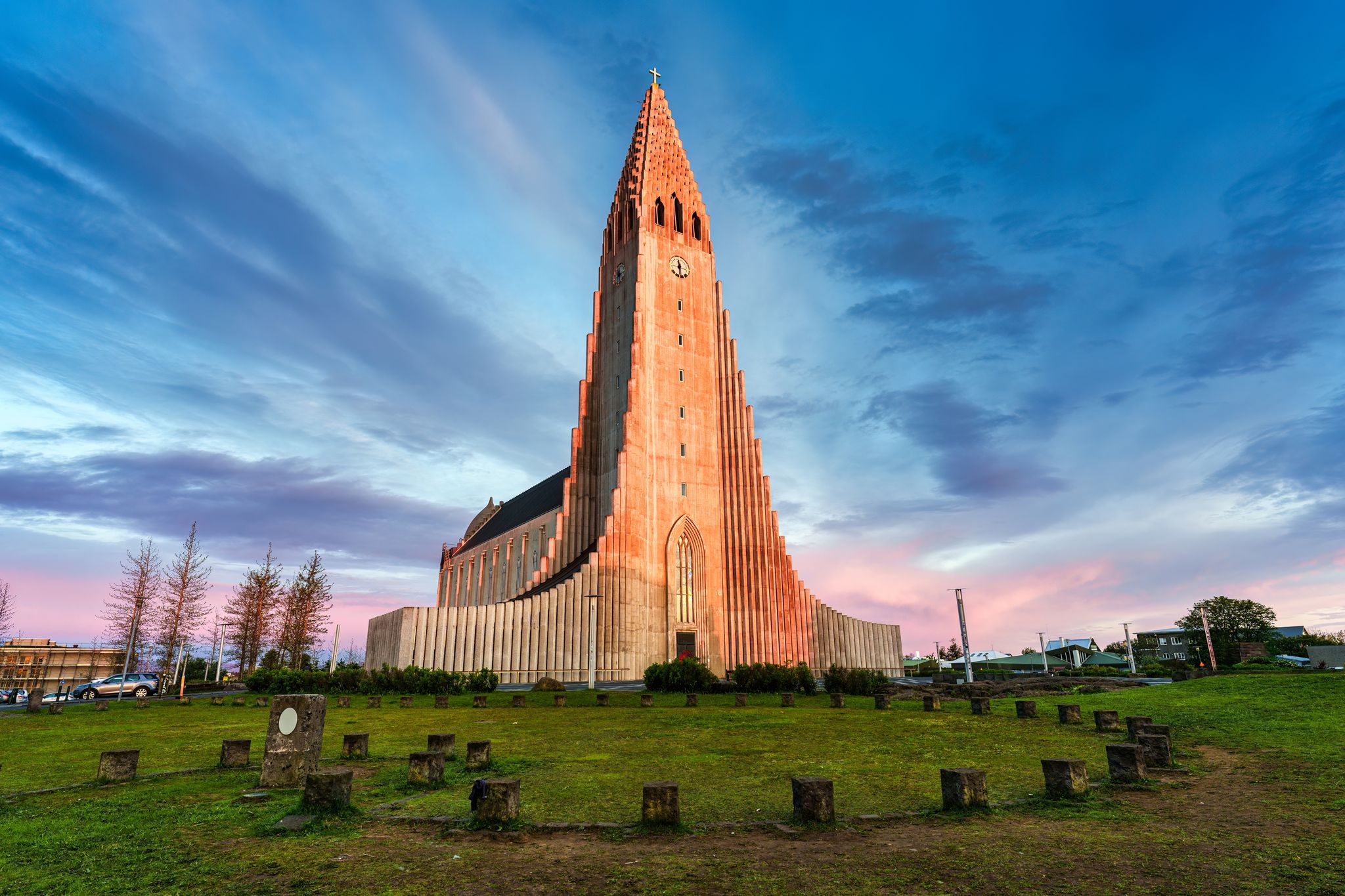
Photographers will find Iceland a paradise for capturing stunning images throughout the year. This is thanks to its breathtaking landscapes and favorable lighting conditions. Winter and summer are the perfect seasons to book your photography tours in Reykjavik, as these seasons provide scenic backgrounds for your still shots.
For winter photography, Iceland's snowy landscapes and extended golden hours provide unique opportunities to photograph serene mountain vistas and wintry scenery. The low sun angle during this time ensures longer golden hours, allowing for stunning images of snow-covered terrains.
For summer photography, the extended golden hour from 10 PM to 2 AM creates magical lighting conditions. It's perfect for capturing the beauty of Dettifoss Waterfall and the Eastfjords. The extended blue hour also allows for stunning shots of Lake Myvatn and the volcanic landscapes near Husavik.
For urban photography, the best times are early morning or late afternoon when the lighting is most favorable. Hallgrimskirkja Church stands out as an iconic subject, with its unique architecture providing a dramatic backdrop. From the top of the tower, you can capture spectacular cityscape views and detailed architectural shots.
Best Time To Visit Reykjavik for the Midnight Sun
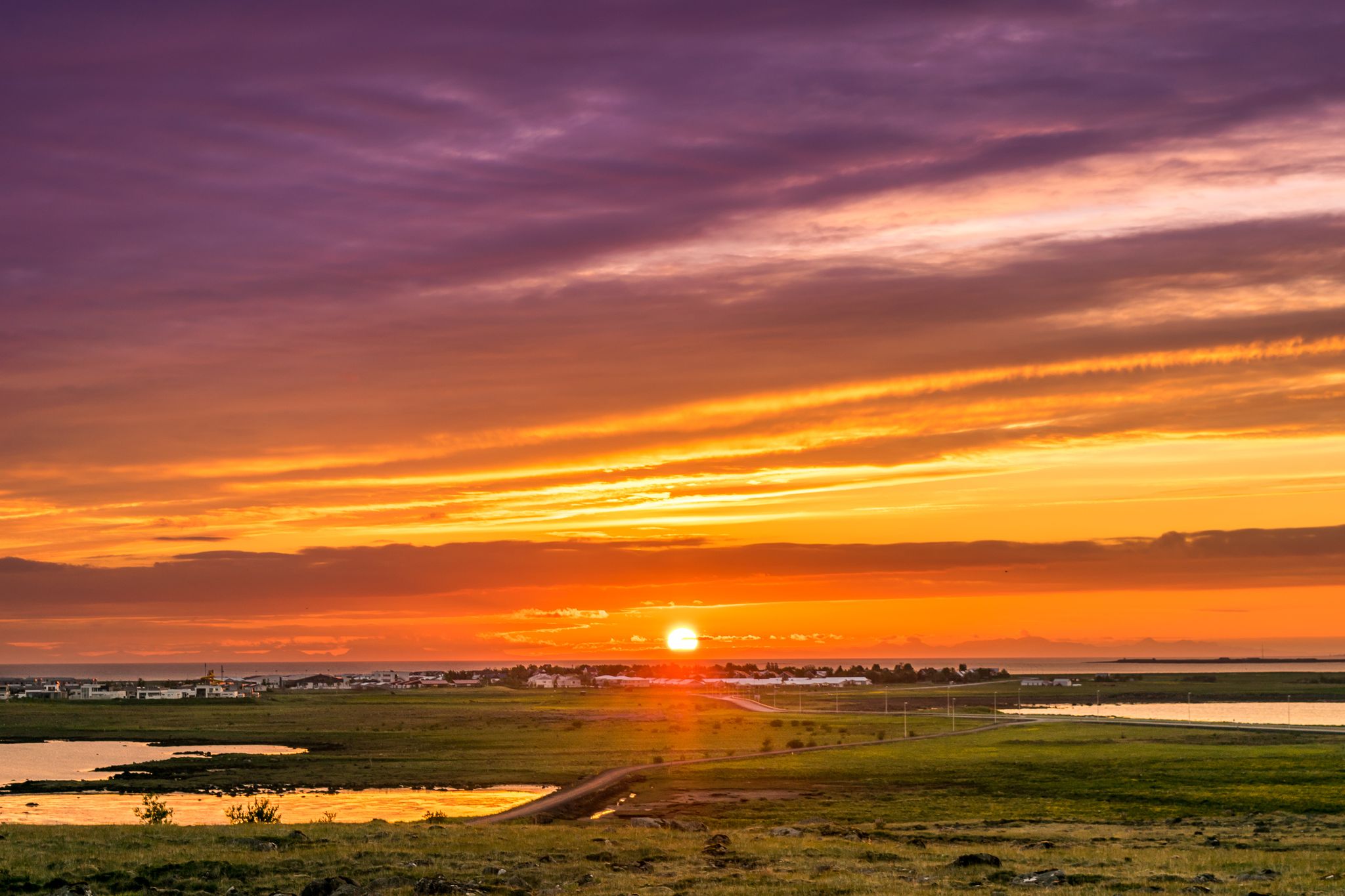
If you're dreaming of long summer days filled with golden sunlight, Reykjavik, Iceland, is the perfect destination. The best time to experience the breathtaking phenomenon of the midnight sun is from late May to early August. During this period, the sun barely dips below the horizon, creating an enchanting atmosphere where daylight seems endless.
In late May, the days begin to stretch significantly, with the sun rising early and setting late. By June, the peak of the midnight sun occurs, offering nearly 24 hours of daylight. This is an ideal time for outdoor activities such as hiking, exploring the lovely city, or whale watching in the midnight sun from Reykjavik.
Visiting the city during this time allows you to engage in a variety of experiences. You can take advantage of the extended daylight by embarking on a scenic week-long road trip from Reykjavik or enjoying cultural events and festivals that thrive in the summer months.
As July approaches, the sun continues to shine brightly, and while the midnight sun starts to gradually wane by early August, there are still plenty of daylight hours to enjoy. This is a fantastic time for whale-watching tours or spending the afternoon exploring the famous Golden Circle from Reykjavik.
Frequently Asked Questions
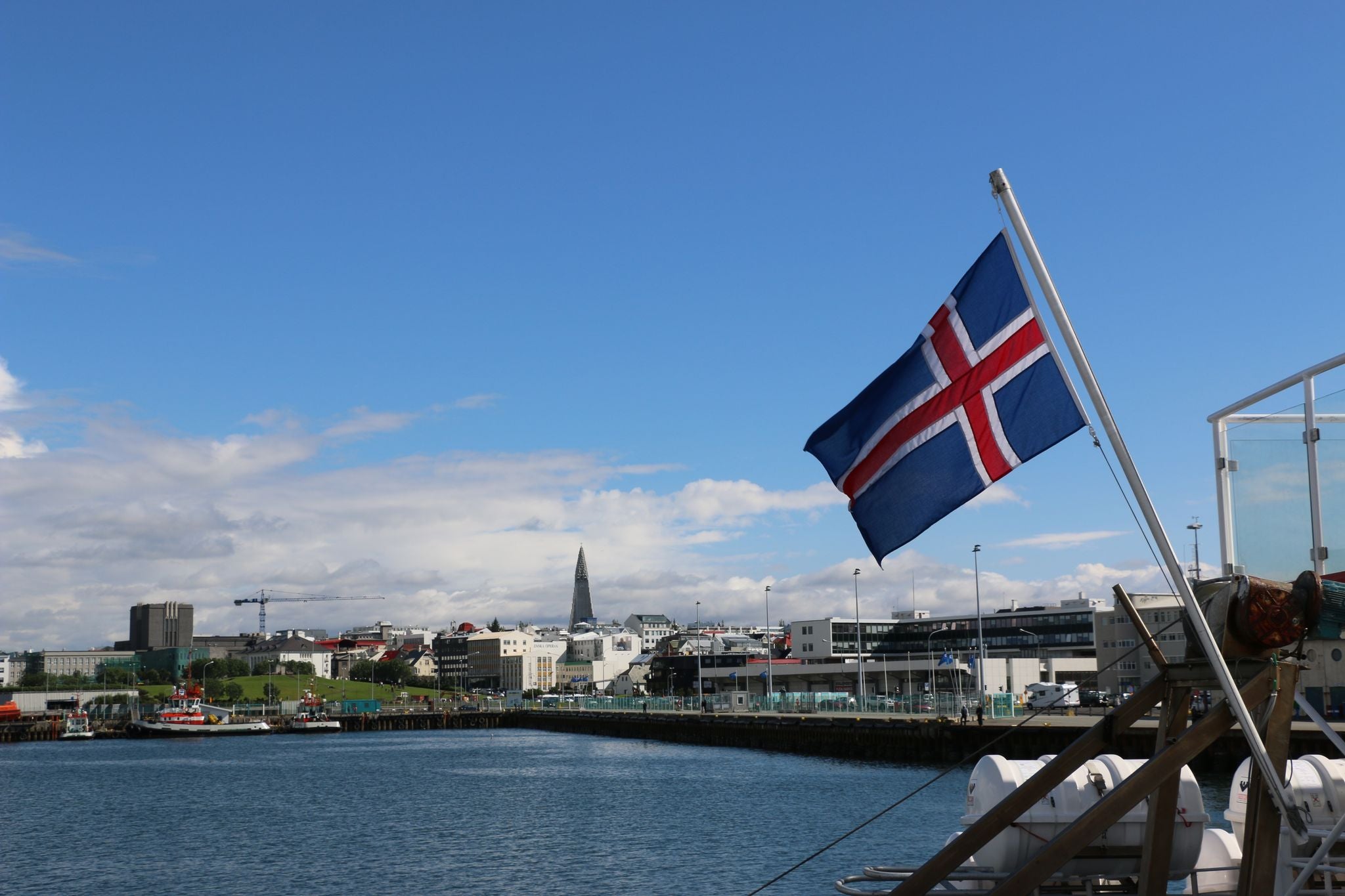
When is the best time for families to visit Reykjavik?
The best time to visit Reykjavik for families with children is during the summer months, from June to August. During this time, you’ll find plenty of kid-friendly activities to do in Reykjavik. Summer experiences milder weather, with temperatures ranging from 50 F to 60 F (10 C to 15 C), making outdoor activities and sightseeing comfortable.
During summer, families have more time to explore because the days are longer, with the sun setting as late as midnight. Family tours in Reykjavik include whale-watching tours, horseback riding, and visits to geothermal pools. But remember, summer is busy and expensive, so you might also consider the quieter and cheaper shoulder seasons in spring or fall.
When is the best time to visit Reykjavik for honeymooners?
The best time for honeymooners to visit Reykjavik is during the summer months, from June to August. Summer offers couples several romantic experiences in Reykjavik.
This season provides long daylight hours, perfect for exploring the city's colorful streets and charming cafes. It's also ideal for outdoor adventures like hiking and sightseeing around the Golden Circle. However, expect crowds and slightly higher prices.
For a more unique experience, consider the shoulder seasons from April to May and September to October. You'll find fewer crowds, cozy fall vibes, and the chance to catch the magical northern lights. This is also a great time to score affordable flights to Reykjavik and find accommodation deals!
When is the best time to visit Reykjavik to avoid crowds?
The best time to visit Reykjavik to avoid crowds is during the shoulder seasons of spring from April to May and fall from September to November. During these months, tourist numbers are lower, and popular attractions are less crowded. This allows visitors to enjoy a more relaxed and intimate experience.
Additionally, the weather during these seasons is still pleasant. It's ideal for outdoor activities, sightseeing, and quick weekend getaways in Reykjavík. For a more intimate experience, you can choose to book Reykjavik private tours with guides that cater only to your group.
When is the best time to visit Reykjavik for a cheap vacation?
For budget-friendly vacations, January and February are the cheapest time to visit Reykjavik, Iceland. With fewer tourists due to cold weather and shorter days, prices for hotels, flights, and activities drop. Despite the chilly temperatures and limited daylight, travelers can enjoy affordable trips with discounted rates and special deals from hotels and tour companies.
Visiting the city during the shoulder seasons of spring (April to May) and fall (September to November) can also save you money. With fewer tourists, prices for hotels and activities are lower. Plus, the weather is nicer and the days are longer, making it perfect for sightseeing without spending too much.
Final Insights: When To Visit Reykjavik, Iceland
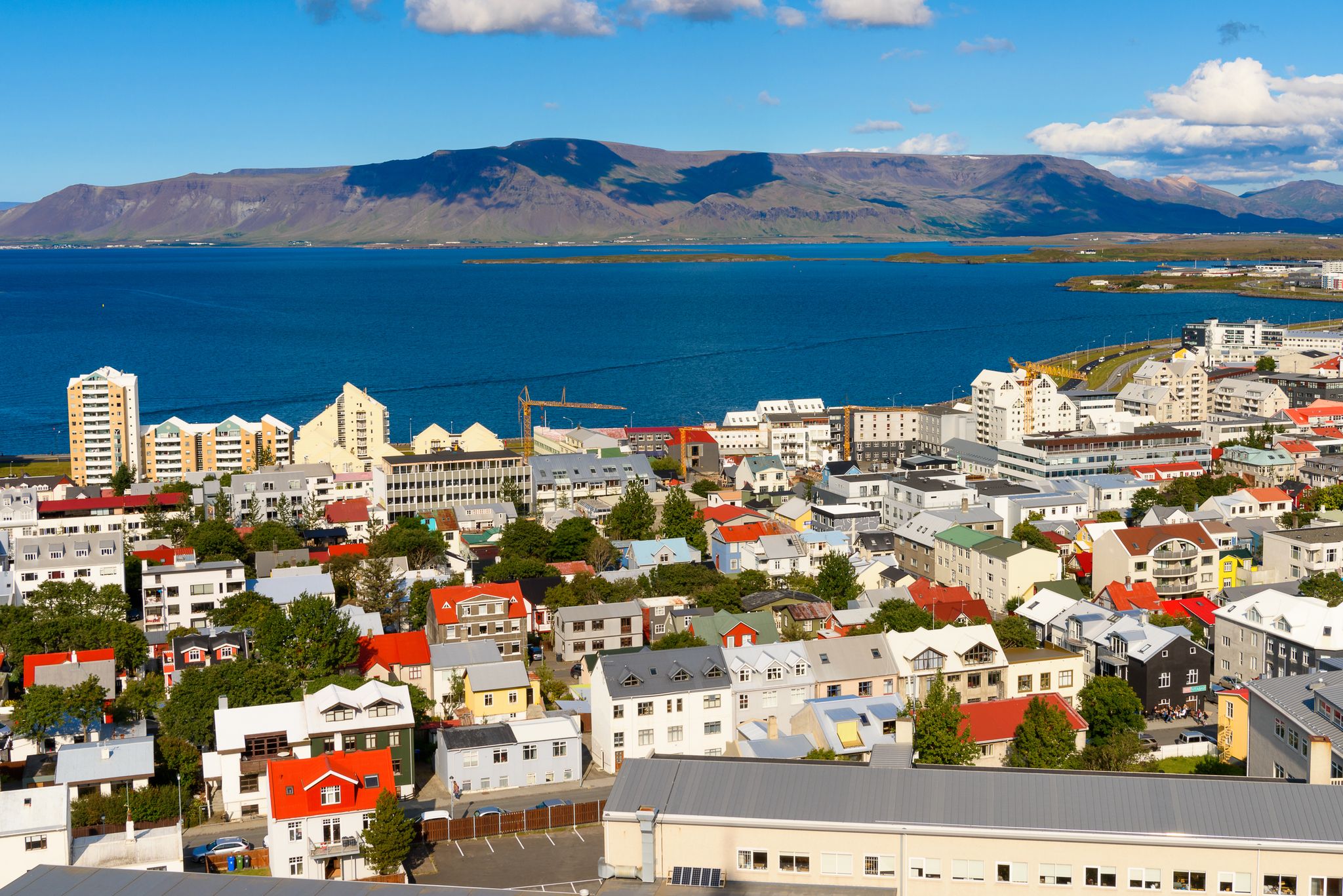
The best time to visit Reykjavik depends on your preferences, budget, and travel goals. If you crave energetic festivals and milder weather, summer (June to August) is ideal, offering longer days and plenty of outdoor activities. For those interested in witnessing the Northern Lights and enjoying winter sports, the colder months (December to March) are perfect.
This destination offers the widest range of accommodations in Reykjavik, ensuring you’ll find a cozy spot in the heart of the action or a serene retreat for relaxation. From boutique hotels to charming guesthouses, the best places to stay in Reykjavik cater to every traveler’s needs.
No matter when you go and where you stay in Reykjavik, the city will not disappoint. Pack your bags, choose your ideal stay, and let Reykjavik’s charm and the wonders of Iceland captivate your heart. Your exciting journey in the land of fire and ice is ready to unfold!
